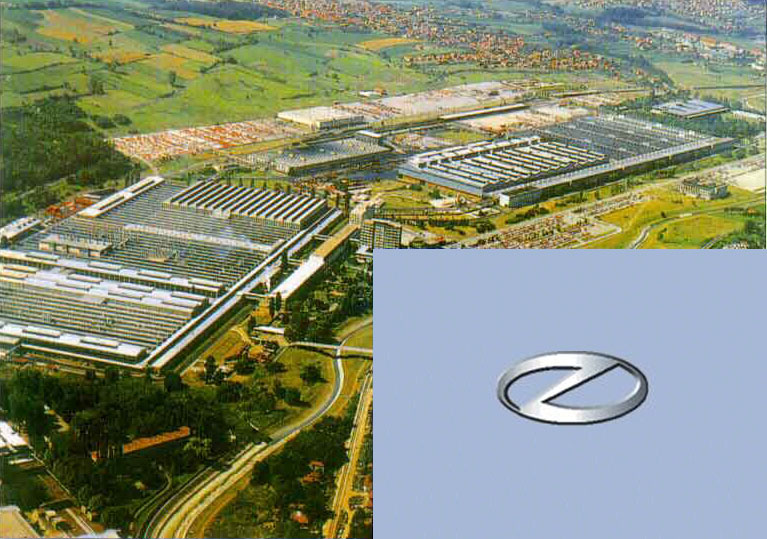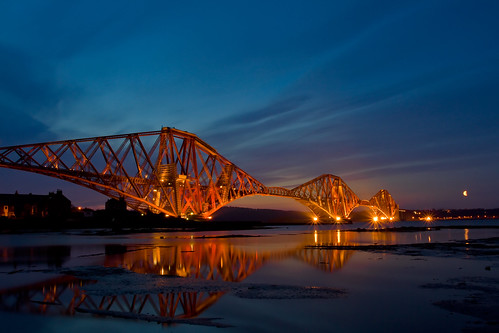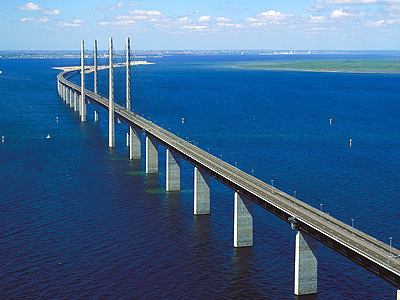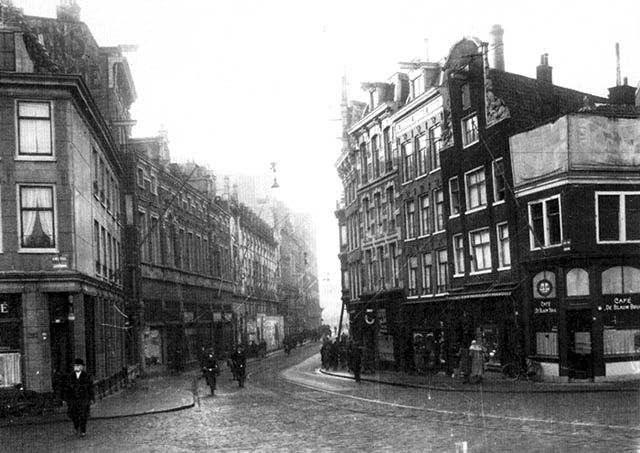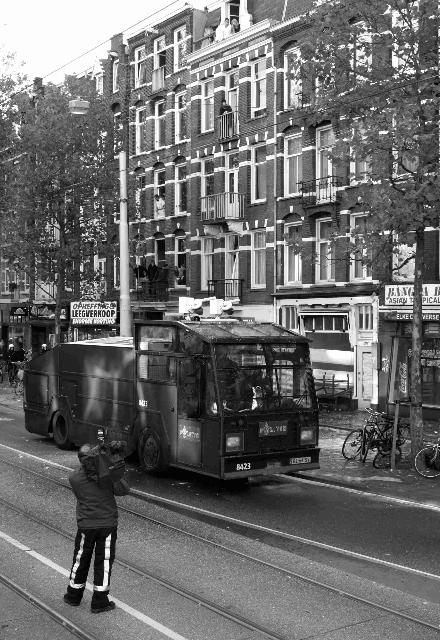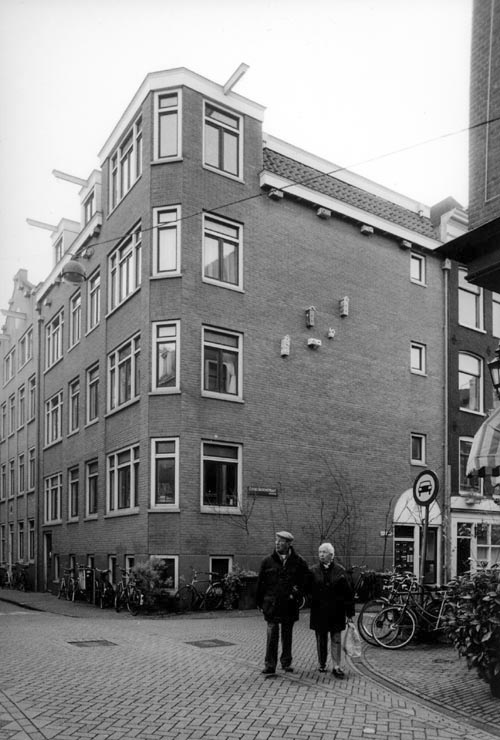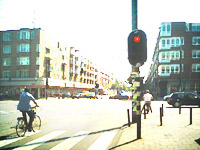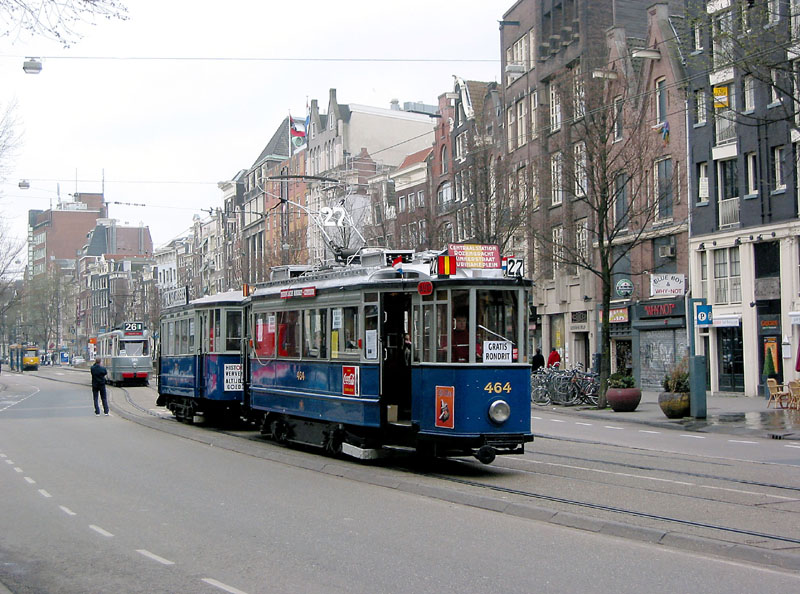

Hallo en welkom bij het alfabet spel!
Het gaat zo:
Elke keer wordt van een bepaald thema een alfabet-reeks met plaatjes neergezet.
Bijvoorbeeld: stel, het eerste thema is dieren.
Ik zeg dan
Aap
en plaats een plaatje van een aap.
De volgende die post moet dan een plaatje van een dier met een B zoeken, en zo totdat men bij de Z is. Degene die de Z heeft geplaatst moet tevens een nieuw thema bedenken voor de volgende ronde.
Hier waren we gebleven:
Thema: Acteurs
Game on!
Het gaat zo:
Elke keer wordt van een bepaald thema een alfabet-reeks met plaatjes neergezet.
Bijvoorbeeld: stel, het eerste thema is dieren.
Ik zeg dan
Aap
en plaats een plaatje van een aap.
De volgende die post moet dan een plaatje van een dier met een B zoeken, en zo totdat men bij de Z is. Degene die de Z heeft geplaatst moet tevens een nieuw thema bedenken voor de volgende ronde.
Hier waren we gebleven:
Thema: Acteurs
Game on!
God vergeeft me wel....het is immers zijn vak...!!!


Plaatje ???quote:Op dinsdag 11 juli 2006 22:27 schreef Wereldman het volgende:
Tom Cruise
God vergeeft me wel....het is immers zijn vak...!!!


De Y wel dan denk je ?quote:Op donderdag 13 juli 2006 11:18 schreef Smurfin het volgende:
De X gaat niet lukken volgens mij
God vergeeft me wel....het is immers zijn vak...!!!


Dan de Z
Billy Zane
'K kwam er later in, en om te voorkomen dat ik een vraag herhaal,
heb ik even alle vragen uit de vorige topics opgezocht;
Films & TV programma's
Bands
Bord- en computerspellen
Snoep & Snacks
Muziekinstrumenten
Landen
Winkels
Stripfiguren
TV-series
Plains, trains & automobiles
Klaagbaak
Bloemen
WK 2006 voetballers
Acteurs/actrices
Lichaamsdelen
(Gezelschap) Spelletjes
Dieren
Merken
Filmtitels
Boektitels
(Nederlandse) Politici
Gerechten
Genotsmiddelen
Zomerse vakantiebestemmingen
Componisten
Economische begrippen
Italiaanse toeristische attracties
Voetballers
Actrices
Acteurs
Nu verder met
Historische figuren
Billy Zane
'K kwam er later in, en om te voorkomen dat ik een vraag herhaal,
heb ik even alle vragen uit de vorige topics opgezocht;
Films & TV programma's
Bands
Bord- en computerspellen
Snoep & Snacks
Muziekinstrumenten
Landen
Winkels
Stripfiguren
TV-series
Plains, trains & automobiles
Klaagbaak
Bloemen
WK 2006 voetballers
Acteurs/actrices
Lichaamsdelen
(Gezelschap) Spelletjes
Dieren
Merken
Filmtitels
Boektitels
(Nederlandse) Politici
Gerechten
Genotsmiddelen
Zomerse vakantiebestemmingen
Componisten
Economische begrippen
Italiaanse toeristische attracties
Voetballers
Actrices
Acteurs
Nu verder met
Historische figuren
... ik zeg niet dat het zo is maar het voelt wel zo ...


edit
[ Bericht 94% gewijzigd door buzzer op 14-07-2006 12:15:56 ]
[ Bericht 94% gewijzigd door buzzer op 14-07-2006 12:15:56 ]
Toch vreemd hoor.. Dat men het over een boek heeft en daarbij de vraag stelt of het ook offline te bekijken is


ik keek naar de S van Strausquote:Op vrijdag 14 juli 2006 11:51 schreef Smurfin het volgende:
We waren nog maar bij de L
Toch vreemd hoor.. Dat men het over een boek heeft en daarbij de vraag stelt of het ook offline te bekijken is


de M dan maar:
Mao Zedong
Mao Zedong
Toch vreemd hoor.. Dat men het over een boek heeft en daarbij de vraag stelt of het ook offline te bekijken is


Walter Ulbricht
1893- 1973
East German Statesman
Walter Ulbricht was born in Leipzig. He was a Social Democrat who joined the Communist Party in Germany on its founding in 1918. He was a member of the Reichstag from 1928 to 1933. When Hitler came to power in 1933, Ulbricht fled Germany. He spent much of his time during that period in the Soviet Union.
He returned to Germany with the conquering Soviet troops, and in 1949 became the Deputy Premier of the newly created German Democratic Republic (East Germany). In 1950, Ulbricht became the leader of the Socialist Unity Party.
Ulbrich ruled East Germany with an iron fist. He pressured Khrushchev into building the Berlin Wall in 1961 to counter the exodus of East Germans to the West.
1893- 1973
East German Statesman
Walter Ulbricht was born in Leipzig. He was a Social Democrat who joined the Communist Party in Germany on its founding in 1918. He was a member of the Reichstag from 1928 to 1933. When Hitler came to power in 1933, Ulbricht fled Germany. He spent much of his time during that period in the Soviet Union.
He returned to Germany with the conquering Soviet troops, and in 1949 became the Deputy Premier of the newly created German Democratic Republic (East Germany). In 1950, Ulbricht became the leader of the Socialist Unity Party.
Ulbrich ruled East Germany with an iron fist. He pressured Khrushchev into building the Berlin Wall in 1961 to counter the exodus of East Germans to the West.


Alessandro Volta
Uitvinder van de elektrische batterij ofwel voltaďsche cel (Zuil van Volta).
Uitvinder van de elektrische batterij ofwel voltaďsche cel (Zuil van Volta).
Ik ben niet labiel. Ik ben emotioneel flexibel.


Xenophanes
Xenophanes (circa 570 - circa 475 v. Chr.) was een Grieks filosoof en dichter (zie ook Griekse Elegie), geboren in Colophon, rond 570 v. Chr. Data en betrouwbare gegevens over zijn leven zijn schaars. Hij ontvluchtte al vroeg uit zijn geboorteplaats naar Sicilië, vanwege de Perzische invallen die zijn land destijds teisterden. Van Sicilië verhuisde hij naar Magna Graecia, waar hij filosoof werd in de school van Pythagoras. Hier kreeg hij aanzienlijke vrijheden, en weerstond de doctrines van Epimenides, Thales en Pythagoras. Uiteindelijk vestigde hij zich in Elea in Zuid-Italië, waar hij in ca. 475 voor Chr. overleed.
Xenophanes (circa 570 - circa 475 v. Chr.) was een Grieks filosoof en dichter (zie ook Griekse Elegie), geboren in Colophon, rond 570 v. Chr. Data en betrouwbare gegevens over zijn leven zijn schaars. Hij ontvluchtte al vroeg uit zijn geboorteplaats naar Sicilië, vanwege de Perzische invallen die zijn land destijds teisterden. Van Sicilië verhuisde hij naar Magna Graecia, waar hij filosoof werd in de school van Pythagoras. Hier kreeg hij aanzienlijke vrijheden, en weerstond de doctrines van Epimenides, Thales en Pythagoras. Uiteindelijk vestigde hij zich in Elea in Zuid-Italië, waar hij in ca. 475 voor Chr. overleed.
... ik zeg niet dat het zo is maar het voelt wel zo ...


Verder met;
Leden van een Koninklijke familie
Prinses Amalia
Leden van een Koninklijke familie
Prinses Amalia
... ik zeg niet dat het zo is maar het voelt wel zo ...


Koningin Elizabeth II van Engeland
Vrienden: zij die je verleden kennen, in je toekomst geloven en je vandaag accepteren zoals je bent


Prins Gabriël
Gabriël Boudewijn Karel Maria (Anderlecht, 20 augustus 2003), Prins van België, is het tweede kind van prins Filip en prinses Mathilde.
Gabriël Boudewijn Karel Maria (Anderlecht, 20 augustus 2003), Prins van België, is het tweede kind van prins Filip en prinses Mathilde.
... ik zeg niet dat het zo is maar het voelt wel zo ...


Prins Hendrik
Vrienden: zij die je verleden kennen, in je toekomst geloven en je vandaag accepteren zoals je bent


Prinses Juliana
Vrienden: zij die je verleden kennen, in je toekomst geloven en je vandaag accepteren zoals je bent


Karel August Willem Nicolaas van Saksen-Weimar-Eisenach
Karel August Willem Nicolaas Alexander Michael Bernhard Hendrik Frederik Stefan (Weimar 31 juli 1844 – Kaap St Martin 20 november 1894) was de zoon van groothertog Karel Alexander van Saksen-Weimar-Eisenach en prinses Sophie van Oranje-Nassau. Zijn moeder was de dochter van Willem II, koning der Nederlanden, en tot haar dood de opvolgster van de minderjarige koningin Wilhelmina indien haar en/of haar moeder iets zou overkomen
Karel August Willem Nicolaas Alexander Michael Bernhard Hendrik Frederik Stefan (Weimar 31 juli 1844 – Kaap St Martin 20 november 1894) was de zoon van groothertog Karel Alexander van Saksen-Weimar-Eisenach en prinses Sophie van Oranje-Nassau. Zijn moeder was de dochter van Willem II, koning der Nederlanden, en tot haar dood de opvolgster van de minderjarige koningin Wilhelmina indien haar en/of haar moeder iets zou overkomen
... ik zeg niet dat het zo is maar het voelt wel zo ...


Koning Leopold
Leopold, Philippe, Karel, Albert, Meinrad, Hubert, Marie, Miguel wordt in 1901 geboren als zoon van Prins Albert en Prinses Elisabeth, de toekomstige Koning en Koningin der Belgen. De toenmalige Koning, Leopold II, is zijn grootoom. Bij de dood van Leopold II in 1909 bestijgt Albert de troon en wordt prins Leopold Hertog van Brabant, de titel die in België doorgaans aan de kroonprins wordt gegeven. In 1915 neemt prins Leopold dienst in het leger, maar hij zal niet actief meevechten tegen de Duitse bezettingsmacht.
In 1926 ontmoet de kroonprins in Stockholm de Zweedse Prinses Astrid, geboren op 17 november 1905, dochter van Prins Carl en nicht van Koning Gustav V. In november van datzelfde jaar trouwen ze. Ze krijgen drie kinderen : op 11 oktober 1927 prinses Josephine-Charlotte, de latere Groothertogin van Luxemburg, op 7 september 1930 prins Boudewijn, de latere koning, en op 7 juni 1934 prins Albert, de huidige koning. Bij de dood van zijn vader, koning Albert, in 1934, wordt prins Leopold de vierde Koning der Belgen.
Don't walk in front of me, I may not follow... Don't walk behind me, I may not lead...
Just walk beside me and be my friend.
Games
Just walk beside me and be my friend.
Games


Koningin Noor van Jordanie
Vrienden: zij die je verleden kennen, in je toekomst geloven en je vandaag accepteren zoals je bent


Olga Konstantinova van Rusland
Olga van Griekenland (3 september 1851 - 18 juni 1926) was een Russische grootvorstin en, door haar huwelijk, koningin van Griekenland.
Zij was de dochter van grootvorst Constantijn Romanov (een jongere broer van tsaar Alexander II) en Alexandra van Saksen-Altenburg. Zij was een kleindochter van tsaar Nicolaas I.
In 1867 trouwde ze - pas zestien jaar oud - met de de Griekse koning George I, die ze had leren kennen toen deze zijn zuster, Dagmar, de vrouw van de Russische kroonprins Alexander, kwam bezoeken.
Olga van Griekenland (3 september 1851 - 18 juni 1926) was een Russische grootvorstin en, door haar huwelijk, koningin van Griekenland.
Zij was de dochter van grootvorst Constantijn Romanov (een jongere broer van tsaar Alexander II) en Alexandra van Saksen-Altenburg. Zij was een kleindochter van tsaar Nicolaas I.
In 1867 trouwde ze - pas zestien jaar oud - met de de Griekse koning George I, die ze had leren kennen toen deze zijn zuster, Dagmar, de vrouw van de Russische kroonprins Alexander, kwam bezoeken.
... ik zeg niet dat het zo is maar het voelt wel zo ...


Prins Pieter-Christiaan
Vrienden: zij die je verleden kennen, in je toekomst geloven en je vandaag accepteren zoals je bent


Ragnhild van Noorwegen
Ragnhild van Noorwegen (9 juni 1930) is een Noorse prinses. Zij is de oudste dochter van koning Olav V en kroonprinses Märtha. Zij is een zuster van de Noorse koning Harald V.
Ragnhild van Noorwegen (9 juni 1930) is een Noorse prinses. Zij is de oudste dochter van koning Olav V en kroonprinses Märtha. Zij is een zuster van de Noorse koning Harald V.
... ik zeg niet dat het zo is maar het voelt wel zo ...


Koningin Sylvia van Zweden
Toch vreemd hoor.. Dat men het over een boek heeft en daarbij de vraag stelt of het ook offline te bekijken is


Thyra van Denemarken
Thyra van Denemarken (29 september 1853 - 26 februari 1933), was een Deense prinses.
Zij was de dochter van koning Christiaan IX van Denemarken en Louise van Hessen-Kassel en de zuster van de Britse koningin Alexandra en van de Russische tsarina Maria Fjodorova.
Zelf huwde ze op 22 september 1878 met Ernst August II van Hannover, 3e hertog van Cumberland.
Thyra van Denemarken (29 september 1853 - 26 februari 1933), was een Deense prinses.
Zij was de dochter van koning Christiaan IX van Denemarken en Louise van Hessen-Kassel en de zuster van de Britse koningin Alexandra en van de Russische tsarina Maria Fjodorova.
Zelf huwde ze op 22 september 1878 met Ernst August II van Hannover, 3e hertog van Cumberland.
... ik zeg niet dat het zo is maar het voelt wel zo ...


Prinses Victoria van Zweden
Prinses Victoria Ingrid Alice Desirée, hertogin van Västergötland, is de Zweedse kroonprinses. Ze werd geboren op 14 juli 1977.
Prinses Victoria is de oudste dochter van koning Karel XVI Gustaaf van Zweden en koningin Silvia van Zweden. Toen het in Zweden vanaf 1 januari 1980 mogelijk werd gemaakt dat ook vrouwen staatshoofd konden worden, werd prinses Victoria kroonprinses. Zweden was hiermee het eerste land waarin troonsopvolging altijd aan de eerstgeborene toekwam, onafhankelijk van het geslacht. Hiernaast staat ze ook in de lijn van de Britse troonopvolging, op plaats 189, doordat haar vader een achter-achter-kleinzoon is van koningin Victoria.
Prinses Victoria Ingrid Alice Desirée, hertogin van Västergötland, is de Zweedse kroonprinses. Ze werd geboren op 14 juli 1977.
Prinses Victoria is de oudste dochter van koning Karel XVI Gustaaf van Zweden en koningin Silvia van Zweden. Toen het in Zweden vanaf 1 januari 1980 mogelijk werd gemaakt dat ook vrouwen staatshoofd konden worden, werd prinses Victoria kroonprinses. Zweden was hiermee het eerste land waarin troonsopvolging altijd aan de eerstgeborene toekwam, onafhankelijk van het geslacht. Hiernaast staat ze ook in de lijn van de Britse troonopvolging, op plaats 189, doordat haar vader een achter-achter-kleinzoon is van koningin Victoria.


Carlos Xavier de Bourbon de Parme
Carlos Xavier Bernardo Sixto Marie de Bourbon de Parme, Prins van Bourbon-Parma, Prins van Piacenza, werd geboren op 27 januari 1970 in Nijmegen.
Carlos is het eerste kind van prinses Irene en Karel Hugo van Bourbon-Parma. Hij krijgt later nog 2 zusjes, Margarita en Carolina en 1 broertje, Jaime, erbij. Hij wordt gedoopt in het kasteel van Lignieres in Frankrijk.
Carlos Xavier Bernardo Sixto Marie de Bourbon de Parme, Prins van Bourbon-Parma, Prins van Piacenza, werd geboren op 27 januari 1970 in Nijmegen.
Carlos is het eerste kind van prinses Irene en Karel Hugo van Bourbon-Parma. Hij krijgt later nog 2 zusjes, Margarita en Carolina en 1 broertje, Jaime, erbij. Hij wordt gedoopt in het kasteel van Lignieres in Frankrijk.


ik heb repect voor jullie intelligentie en kennis!
hoofdletters kosten teveel tijd
don't avoid pain to gain pleasure
niet iedereen is iedereen
don't avoid pain to gain pleasure
niet iedereen is iedereen


Zorka van Montenegro
Zorka Petrović-Njego¨ (Cetinje 23 december 1864 – aldaar 16 maart 1890), prinses van Montenegro. Ze was een dochter van vorst Nicolaas I van Montenegro en Milena Vukotić.
Zorka Petrović-Njego¨ (Cetinje 23 december 1864 – aldaar 16 maart 1890), prinses van Montenegro. Ze was een dochter van vorst Nicolaas I van Montenegro en Milena Vukotić.
... ik zeg niet dat het zo is maar het voelt wel zo ...


Dan gooi ik er zelf maar weer één tegenaan;
Alcoholische dranken
Advocaat
Alcoholische dranken
Advocaat
... ik zeg niet dat het zo is maar het voelt wel zo ...


Flugel
Toch vreemd hoor.. Dat men het over een boek heeft en daarbij de vraag stelt of het ook offline te bekijken is


Jägermeister
nee ik ben dat niet naast die fles
nee ik ben dat niet naast die fles
Toch vreemd hoor.. Dat men het over een boek heeft en daarbij de vraag stelt of het ook offline te bekijken is


OHNEE?????quote:
U-BIER dan?????????
☐ Geschikt | ☑ Ongeschikt
Carved upon my stone my body lie, but still I roam...
Carved upon my stone my body lie, but still I roam...


En dan neem ik de Wodka met een W want die komt voor de X mrSPLIFFY
Ik ben niet labiel. Ik ben emotioneel flexibel.


lol ja je hebt gelijk.....quote:Op dinsdag 18 juli 2006 21:18 schreef BwennieBren het volgende:
En dan neem ik de Wodka met een W want die komt voor de X mrSPLIFFY
[afbeelding]
ik geef de schuld maar aan de hitte.........
☐ Geschikt | ☑ Ongeschikt
Carved upon my stone my body lie, but still I roam...
Carved upon my stone my body lie, but still I roam...


Zottegems Bier:
Nieuwe reeks:
Engelse bands
Nieuwe reeks:
Engelse bands
Toch vreemd hoor.. Dat men het over een boek heeft en daarbij de vraag stelt of het ook offline te bekijken is


All Saints
Toch vreemd hoor.. Dat men het over een boek heeft en daarbij de vraag stelt of het ook offline te bekijken is


Coldplay
Toch vreemd hoor.. Dat men het over een boek heeft en daarbij de vraag stelt of het ook offline te bekijken is


[ Bericht 100% gewijzigd door numero_uno op 19-07-2006 15:37:18 (had de reeks niet gezien :X) ]
- I'm buttwalking... is that a crime? -
-Never underestimate the predictability of stupidity-
-Never underestimate the predictability of stupidity-


wist ik niet zeker maar was 1 vd weinige bands met een I die ik kende
- I'm buttwalking... is that a crime? -
-Never underestimate the predictability of stupidity-
-Never underestimate the predictability of stupidity-


INXS is een Australische muziekband. De band werd opgericht in Sydney in 1979.quote:Op woensdag 19 juli 2006 18:26 schreef numero_uno het volgende:
wist ik niet zeker maar was 1 vd weinige bands met een I die ik kende
But maybe I'm crazy?
Maybe you're crazy?
Maybe we're crazy?
Probably!
Maybe you're crazy?
Maybe we're crazy?
Probably!


niet eens U2?
- I'm buttwalking... is that a crime? -
-Never underestimate the predictability of stupidity-
-Never underestimate the predictability of stupidity-


quote:Op donderdag 20 juli 2006 19:12 schreef numero_uno het volgende:
niet eens U2?
... ik zeg niet dat het zo is maar het voelt wel zo ...


LOLquote:
wakkkeeee upppppp
☐ Geschikt | ☑ Ongeschikt
Carved upon my stone my body lie, but still I roam...
Carved upon my stone my body lie, but still I roam...


das relax dan lekker fokken tijdens werk....
hou je enquettes ofzow?
hou je enquettes ofzow?
☐ Geschikt | ☑ Ongeschikt
Carved upon my stone my body lie, but still I roam...
Carved upon my stone my body lie, but still I roam...


WORSTEL STERREN!!! (lol)
☐ Geschikt | ☑ Ongeschikt
Carved upon my stone my body lie, but still I roam...
Carved upon my stone my body lie, but still I roam...


neej tech helpdesk voor adsl en shit like that... maar t is lekker rustig dus tja fokken dan maar....


nou kommaarop dan met plaatje B
☐ Geschikt | ☑ Ongeschikt
Carved upon my stone my body lie, but still I roam...
Carved upon my stone my body lie, but still I roam...


Na de W komt de X, dan de Y, en dan pas de Z.quote:
En Zuchero is geen Britse Band
... ik zeg niet dat het zo is maar het voelt wel zo ...


boeiend haha zeg gewoon t eerste wat er in me op komt en dat was dus toevallig geen britse band...quote:Op donderdag 20 juli 2006 19:49 schreef Smurfin het volgende:
[..]
Na de W komt de X, dan de Y, en dan pas de Z.
En Zuchero is geen Britse Band


Dat was nog steeds de vraag, eerst lezen! Anders moet je niet meespelen.quote:Op donderdag 20 juli 2006 19:51 schreef egg-bird het volgende:
[..]
boeiend haha zeg gewoon t eerste wat er in me op komt en dat was dus toevallig geen britse band...
We zijn dus gebleven bij Britse band met een X!
... ik zeg niet dat het zo is maar het voelt wel zo ...


x
y Arthur Young and his Tzigane Band (bestaan geen plaatjes van!
z ZUM
Om het even af te maken... Gaan we nu verder met de B van Worstelen??
y Arthur Young and his Tzigane Band (bestaan geen plaatjes van!
z ZUM
Om het even af te maken... Gaan we nu verder met de B van Worstelen??
☐ Geschikt | ☑ Ongeschikt
Carved upon my stone my body lie, but still I roam...
Carved upon my stone my body lie, but still I roam...


is t te moeilijk mensen????? komop
☐ Geschikt | ☑ Ongeschikt
Carved upon my stone my body lie, but still I roam...
Carved upon my stone my body lie, but still I roam...


wil wel conan zeggen maarja dan zijn er natuurlijk weer mensen die daar weer over gaan zeiken dus tja srry Spliff. kweeniemeer


okč, dan gaan we vanaf hier met het spel verderquote:Op donderdag 20 juli 2006 19:54 schreef Smurfin het volgende:
[..]
We zijn dus gebleven bij Britse band met een X!
Zet `s nachts je prostaat op tenminste 16 graden, dan bevriezen je leidingen niet.


Mopshond
Don't walk in front of me, I may not follow... Don't walk behind me, I may not lead...
Just walk beside me and be my friend.
Games
Just walk beside me and be my friend.
Games


Old English Sheepdog
Don't walk in front of me, I may not follow... Don't walk behind me, I may not lead...
Just walk beside me and be my friend.
Games
Just walk beside me and be my friend.
Games


Q bestaat niet dus dan maar R
Rottweiler
Rottweiler
Sometimes people write the things that they can't say !
Everyone has secrets !
Everyone has secrets !


Shetland Sheepdog (Sheltie)
Puppie
Puppie
Don't walk in front of me, I may not follow... Don't walk behind me, I may not lead...
Just walk beside me and be my friend.
Games
Just walk beside me and be my friend.
Games


U is er niet.
Verder met de Västgötaspet.
Verder met de Västgötaspet.
Don't walk in front of me, I may not follow... Don't walk behind me, I may not lead...
Just walk beside me and be my friend.
Games
Just walk beside me and be my friend.
Games


X is er ook al niet
Yorkshire Terriër
Yorkshire Terriër
Don't walk in front of me, I may not follow... Don't walk behind me, I may not lead...
Just walk beside me and be my friend.
Games
Just walk beside me and be my friend.
Games


Verder met Musea
Afrika Museum
Het Afrika Museum is een museum in Berg en Dal, dat geheel is gewijd aan kunst uit, en culturen van het continent Afrika.
... ik zeg niet dat het zo is maar het voelt wel zo ...


Bijbels museum
De Cromhouthuizen herengracht 366-368 te Amsterdam
Ontmoetingsplaats van bijbel, kunst en cultuur in een monument vol geschiedenis.
De Cromhouthuizen herengracht 366-368 te Amsterdam
Ontmoetingsplaats van bijbel, kunst en cultuur in een monument vol geschiedenis.


Drents Museum
Het Drents Museum ligt in het centrum van Assen in Drenthe.
Het heeft o.a. een grote vaste collectie over de prehistorie van Drenthe met vaste en wissel-tentoonstellingen. Ook zijn hier veenlijken te bezichtigen zoals het meisje van Yde en het Paar van Weerdinge.
Het Drents Museum ligt in het centrum van Assen in Drenthe.
Het heeft o.a. een grote vaste collectie over de prehistorie van Drenthe met vaste en wissel-tentoonstellingen. Ook zijn hier veenlijken te bezichtigen zoals het meisje van Yde en het Paar van Weerdinge.
... ik zeg niet dat het zo is maar het voelt wel zo ...


Enkhuizer almanak museum
In het kleine museum is een permanente expositie ingericht van bijzondere archiefstukken. De eeuwenoude vaste rubrieken van de almanak, zoals bijvoorbeeld de tijdrekening, de stand van de hemellichamen, de watergetijden, het luiden van de poort klokken van Amsterdam of de vertrektijden van de diligences naar Haarlem of Leiden zijn gevisualiseerd met gebruikmaking van actuele technische snufjes. Bladeren door een 17e eeuwse almanak is dus mogelijk!
Het archief heeft de tand des tijds goed getrotseerd, ondanks bijvoorbeeld de drukpersverboden in de tijd van Napoleon of de censuur gedurende de Duitse bezetting.
Bij de presentatie ligt de nadruk op behoud en beheer van de collectie in een sfeer van hi-tech en nostalgie. Zo is door toepassing van moderne technieken het tentoonstellen van kwetsbare objecten toch mogelijk gemaakt. Zeer bijzonder is de verlichting in dit museum. Ieder lichtpunt is namelijk niet een lamp, maar een glasvezelkabel. Vanuit de technische ruimte van het museum wordt het licht door de kabels gejaagd. Het voordeel van deze methode is, dat de (schadelijke) warmte van het licht niet op de tentoongestelde objecten in de vitrines komt. Een deel van de beschikbare ruimte is gereserveerd voor thema-exposities, die rechtstreeks dan wel indirect te maken hebben met de Enkhuizer Almanak.
Make love, not war ☮


Frans Hals Museum
Het Frans Hals Museum in Haarlem is hét museum van de Gouden Eeuw. Het museum dankt zijn naam aan Frans Hals, een van de beroemdste kunstschilders uit de 17e eeuw. Er zijn elf schilderijen van Frans Hals te zien, waaronder zijn wereldwijd befaamde schuttersstukken.
Daarnaast zijn er honderden schilderijen tentoongesteld van andere grote meesters uit de 17e eeuw, zoals:
Jan Steen * Pieter Saenredam * Pieter Claesz * Jacob van Ruisdael
Het museum is gevestigd in een sfeervol 17e-eeuws gebouw, in een van de meest karakteristieke straten in het centrum van Haarlem. Met zijn schilderachtige poortgebouw, de groene binnentuin en de zalen met glas-in-loodramen en balkenplafonds brengt het Frans Hals Museum de tijd van Frans Hals tot leven.
Het Frans Hals Museum in Haarlem is hét museum van de Gouden Eeuw. Het museum dankt zijn naam aan Frans Hals, een van de beroemdste kunstschilders uit de 17e eeuw. Er zijn elf schilderijen van Frans Hals te zien, waaronder zijn wereldwijd befaamde schuttersstukken.
Daarnaast zijn er honderden schilderijen tentoongesteld van andere grote meesters uit de 17e eeuw, zoals:
Jan Steen * Pieter Saenredam * Pieter Claesz * Jacob van Ruisdael
Het museum is gevestigd in een sfeervol 17e-eeuws gebouw, in een van de meest karakteristieke straten in het centrum van Haarlem. Met zijn schilderachtige poortgebouw, de groene binnentuin en de zalen met glas-in-loodramen en balkenplafonds brengt het Frans Hals Museum de tijd van Frans Hals tot leven.
... ik zeg niet dat het zo is maar het voelt wel zo ...


Groninger Museum
Als een schip voor anker ligt het Groninger Museum in het water. Het is een jaren tachtig labyrint waarin de grenzen tussen design, architectuur, kunst en de populaire media wordt doorbroken. Vier paviljoens zijn gegroepeeerd rond een goudgele toren, het depot, de schatkamer van het museum. Ze hebben elk een eigen karakter dat de sfeer van de verschillende collecties weerspiegelt.
Collectie
Het paviljoen dat is opgetrokken uit typisch Groninger baksteen, een ontwerp van Michele De Lucchi, is bestemd voor de Groninger kunstenaarsvereniging De Ploeg en de geschiedenis van Groningen. In het daarboven gelegen met aluminium beklede paviljoen van Philippe Starck is de collectie kunstnijverheid onder gebracht, met als belangrijkste deel wereldvermaard Chinees en Japans porselein.
Mendini Paviljoen
Het kleurrijke Mendini paviljoen wordt bekroond met een wirwar van staalplaten en glas. Deze schijnbare chaos van Coop Himmelb(l)au vormt een fraai contrast met de rest van het gebouw. Het Mendini paviljoen en het Himmelb(l)au paviljoen vormen de ruimtes voor eigen collectie beeldende kunst en tijdelijke tentoonstellingen.
Fotografie, mode, graffiti, Pattern Art & Decoration en design benadrukken het internationale karakter. Bovendien wordt werk van jonge kunstenaars uit binnen- en buitenland getoond en verzameld.
Daarnaast zijn wisselende delen van de collectie beeldende kunst te zien van 1500 tot 1950. Het betreft vooral schilderijen uit de zeventiende eeuw (collectie Hofstede de Groot), laat negentiende en begin twintigste eeuw (collectie Veendorp) en de Groninger kunstenaarsvereniging De Ploeg (1918 e.v.).
Make love, not war ☮


Historisch OpenluchtMuseum Eindhoven
Het Historisch Openluchtmuseum Eindhoven is een openluchtmuseum met de ijzertijd en de middeleeuwen van Brabant als thema. Het ligt in Genneper Parken aan de zuidflank van de stad Eindhoven en is in het seizoen (mei tot en met oktober) zeven dagen per week geopend, daarbuiten op zondagen en enkel voor groepen door de week. In het museum staat het dagelijks leven centraal. Er wordt bijvoorbeeld regelmatig op open vuren gekookt, er zijn middeleeuwse spelletjes en schoolgroepen overnachten in de boerderijen.
Het museum heeft een aantal duidelijke doelgroepen. Van oudsher zijn schoolgroepen erg belangrijk: deze tref je met name op doordeweekse dagen aan. In de weekeinden en de vakanties staan de dagjesmensen centraal. Er wordt veel levende geschiedenis geboden, er zijn regelmatig ‘historische’ evenementen (zoals de vikingmarkt in het Pinksterweekeinde) en in de vakanties zijn er extra activiteiten, met name voor kinderen. Buiten normale openingstijden zijn er ook regelmatig bedrijfs- of familieuitstapjes met een historisch tintje. Het museum werd in 2005 bezocht door ongeveer 60.000 mensen.
Het Historisch Openluchtmuseum Eindhoven is een openluchtmuseum met de ijzertijd en de middeleeuwen van Brabant als thema. Het ligt in Genneper Parken aan de zuidflank van de stad Eindhoven en is in het seizoen (mei tot en met oktober) zeven dagen per week geopend, daarbuiten op zondagen en enkel voor groepen door de week. In het museum staat het dagelijks leven centraal. Er wordt bijvoorbeeld regelmatig op open vuren gekookt, er zijn middeleeuwse spelletjes en schoolgroepen overnachten in de boerderijen.
Het museum heeft een aantal duidelijke doelgroepen. Van oudsher zijn schoolgroepen erg belangrijk: deze tref je met name op doordeweekse dagen aan. In de weekeinden en de vakanties staan de dagjesmensen centraal. Er wordt veel levende geschiedenis geboden, er zijn regelmatig ‘historische’ evenementen (zoals de vikingmarkt in het Pinksterweekeinde) en in de vakanties zijn er extra activiteiten, met name voor kinderen. Buiten normale openingstijden zijn er ook regelmatig bedrijfs- of familieuitstapjes met een historisch tintje. Het museum werd in 2005 bezocht door ongeveer 60.000 mensen.
... ik zeg niet dat het zo is maar het voelt wel zo ...


Industrion
Industrion, museum voor industrie en samenleving te Kerkrade, vertelt het verhaal van 150 jaar wonen, werken en leven. Een fascinerend beleef- en doe museum, waarin het verhaal van mannen, vrouwen en kinderen in fabrieken, thuis en in hun vrije tijd wordt ondersteund door effectverlichting en multimedia programma’s. Spannende exploratoriumonderdelen, verspreid door het hele museum, laten u voelen hoe een krukas werkt of ontdekken waarvoor statische elektriciteit wordt gebruikt.
Industrion, museum voor industrie en samenleving te Kerkrade, vertelt het verhaal van 150 jaar wonen, werken en leven. Een fascinerend beleef- en doe museum, waarin het verhaal van mannen, vrouwen en kinderen in fabrieken, thuis en in hun vrije tijd wordt ondersteund door effectverlichting en multimedia programma’s. Spannende exploratoriumonderdelen, verspreid door het hele museum, laten u voelen hoe een krukas werkt of ontdekken waarvoor statische elektriciteit wordt gebruikt.


Jüdisches Museum Berlin
Het Joods Museum (of Jüdisches Museum) in Berlijn werd in september 2001 geopend. De architect van het gebouw, Daniel Libeskind, heeft het gebouw eruit laten zien als een gebroken Davidsster. De bedoeling van het Joods Museum is de bezoekers laten nadenken over antisemitisme en de jodenvervolging.
Het Joods Museum (of Jüdisches Museum) in Berlijn werd in september 2001 geopend. De architect van het gebouw, Daniel Libeskind, heeft het gebouw eruit laten zien als een gebroken Davidsster. De bedoeling van het Joods Museum is de bezoekers laten nadenken over antisemitisme en de jodenvervolging.
... ik zeg niet dat het zo is maar het voelt wel zo ...


Ianchelevici was een bevlogen beeldhouwer en tekenaar, die een indrukwekkend oeuvre op zijn naam heeft staan.
Een collectie van zijn kleinere, intieme beelden wordt hier permanent geëxposeerd, terwijl de tentoongestelde tekeningen regelmatig worden gewisseld.
Het in 1996 geopende museum is ontstaan uit een particulier initiatief en wordt beheerd door een stichting.
- I'm buttwalking... is that a crime? -
-Never underestimate the predictability of stupidity-
-Never underestimate the predictability of stupidity-


K nog even ertussen gooit.
Kröller- Müller museum Otterlo
Het museum bezit een wereldberoemde collectie voornamelijk 19e en 20e eeuw.
Kröller- Müller museum Otterlo
Het museum bezit een wereldberoemde collectie voornamelijk 19e en 20e eeuw.


Numoro_uno dacht dat de i na de j kwam
Legermuseum
Het legermuseum in Delft was een voormalig artilleriemagazijn van de Staten van Holland en West-Friesland. Het oudste deel komt uit de periode 1601-1602. Er werden uitbreidingen gedaan in 1660 en rond 1692. Na 1802 als Oost-Indisch pakhuis.
Tegenwoordig in gebruik als Koninklijk Militair Historisch Museum.
Legermuseum
Het legermuseum in Delft was een voormalig artilleriemagazijn van de Staten van Holland en West-Friesland. Het oudste deel komt uit de periode 1601-1602. Er werden uitbreidingen gedaan in 1660 en rond 1692. Na 1802 als Oost-Indisch pakhuis.
Tegenwoordig in gebruik als Koninklijk Militair Historisch Museum.
... ik zeg niet dat het zo is maar het voelt wel zo ...


Musée de Montmartre
The area of Montmartre with its village atmosphere has inspired many artists. Located in a 17th-century mansion on this famous hill, the little museum tells the political and religious history of the small and picturesque village through various documents, artefacts and art. Among the highlights of the museum is a collection of paintings by Modigliani and Toulouse-Lautrec, as well as mementoes from great composers such as Gustave Charpentier.
The area of Montmartre with its village atmosphere has inspired many artists. Located in a 17th-century mansion on this famous hill, the little museum tells the political and religious history of the small and picturesque village through various documents, artefacts and art. Among the highlights of the museum is a collection of paintings by Modigliani and Toulouse-Lautrec, as well as mementoes from great composers such as Gustave Charpentier.
But maybe I'm crazy?
Maybe you're crazy?
Maybe we're crazy?
Probably!
Maybe you're crazy?
Maybe we're crazy?
Probably!


Nationaal Museum Verpleging en Verzorging
In het prachtige monumentale Witte Huis in Zetten heeft sinds 2002 het Nationaal Museum Verpleging en Verzorging haar thuis gevonden. Een museum dat inzicht biedt in 150 jaar verplegen en verzorgen in Nederland. Bij de balie kunt u een gratis hand-out krijgen die u door het museum leidt. Op deze manier beleeft u de geschiedenis van ziekenhuizen, medici en patiënten; U ontdekt ontroerende tentoonstellingen met foto's, films, geuren en geluid, uniformen, kunstige pispotten, schattige drinkschuitjes en nog veel meer waardevol en grappig historisch erfgoed. In eerste instantie is het museum opgericht voor verpleegkundigen, verzorgenden en aanstaande beroepsbeoefenaren maar ook voor u is het razend interessant! Een bezoek meer dan waard dus!
Make love, not war ☮


Openbaar Vervoer Museum
Het Openbaar Vervoer Museum Doetinchem bevat een waardevolle collectie op het gebied van trein-, tram- en busvervoer. De unieke collectie is te zien in ruim 40 vitrines en wordt gevormd door schaalmodellen van treinen, trams en bussen en door voorwerpen die met het openbaar vervoer te maken hebben. In het museum wordt niet alleen aandacht geschonken aan de vervoersmiddelen. Er is ook een grote collectie van voorwerpen die iets met het openbaar vervoer te maken hebben. Het gaat hierbij onder andere om uniformen van conducteurs, kaartjes en gebruiksvoorwerpen uit de wereld van het openbaar vervoer. Daarnaast is er een museumarchief dat veel boeken, tekeningen, foto- en ander documentatie-materiaal over de ontstaansgeschiedenis bevat
Het Openbaar Vervoer Museum Doetinchem bevat een waardevolle collectie op het gebied van trein-, tram- en busvervoer. De unieke collectie is te zien in ruim 40 vitrines en wordt gevormd door schaalmodellen van treinen, trams en bussen en door voorwerpen die met het openbaar vervoer te maken hebben. In het museum wordt niet alleen aandacht geschonken aan de vervoersmiddelen. Er is ook een grote collectie van voorwerpen die iets met het openbaar vervoer te maken hebben. Het gaat hierbij onder andere om uniformen van conducteurs, kaartjes en gebruiksvoorwerpen uit de wereld van het openbaar vervoer. Daarnaast is er een museumarchief dat veel boeken, tekeningen, foto- en ander documentatie-materiaal over de ontstaansgeschiedenis bevat
... ik zeg niet dat het zo is maar het voelt wel zo ...


In mijn stad: Rijksmuseum Twenthe
Het Rijksmuseum Twenthe is een museum voor oude en moderne kunst in Enschede.
Het museum is ontstaan uit de collectie van de textielbaron Jan Bernard van Heek (tachtig werken – voornamelijk schilderijen – uit de periode vanaf de Middeleeuwen tot en met de negentiende eeuw) en de Oudheidkamer Twente. Het werd ontworpen door Anton Beudt en Karel Muller, ontwerper van het tuindorp Het Lansink in Hengelo. In 1930 werd het geopend en overgedragen aan de staat.
In de loop der jaren ontving het museum verschillende verzamelingen, onder andere van textielbaronnen. Hierdoor werd het uitgebreid met afdelingen kunst en kunstnijverheid van de 18e eeuw en moderne kunst.
Tussen 1994 en 1996 werd het museum verbouwd. Het werd uitgebreid met een tentoonstellingszaal en museumcafé van Ben van Berkel. De tuin werd heringericht door Lodewijk Baljon.
Op 13 mei 2000 raakte het museum, maar niet de collectie, zwaar beschadigd bij de vuurwerkramp. Het bleef tot april 14 april 2002 gesloten voor herstelwerkzaamheden.
Make love, not war ☮


Stedelijk Museum
Het Stedelijk Museum is een museum in Amsterdam voor moderne kunst. Het ligt aan de Paulus Potterstraat, bij het Museumplein in het stadsdeel Amsterdam Oud-Zuid. Het Rijksmuseum en het Van Gogh Museum zijn ook gevestigd aan het Museumplein.
Het museum werd aan het einde van de 19e eeuw gesticht. In de loop van de 20e eeuw werd het een der toonaangevende musea voor moderne kunst. Het Stedelijk Museum is ontworpen door A.W. Weismann.
Sinds 2004 wordt museum ingrijpend verbouwd en uitgebreid. In die tijd wordt de collectie tijdelijk gehuisvest in het TPG-gebouw op het Oosterdokseiland nabij het Centraal Station.
Het Stedelijk Museum is een museum in Amsterdam voor moderne kunst. Het ligt aan de Paulus Potterstraat, bij het Museumplein in het stadsdeel Amsterdam Oud-Zuid. Het Rijksmuseum en het Van Gogh Museum zijn ook gevestigd aan het Museumplein.
Het museum werd aan het einde van de 19e eeuw gesticht. In de loop van de 20e eeuw werd het een der toonaangevende musea voor moderne kunst. Het Stedelijk Museum is ontworpen door A.W. Weismann.
Sinds 2004 wordt museum ingrijpend verbouwd en uitgebreid. In die tijd wordt de collectie tijdelijk gehuisvest in het TPG-gebouw op het Oosterdokseiland nabij het Centraal Station.
... ik zeg niet dat het zo is maar het voelt wel zo ...


Tropenmuseum
De mooiste voorwerpen en verhalen van de hele wereld vindt u in het Tropenmuseum. Het museum is gevestigd in een van de mooiste historische gebouwen van Amsterdam. Hier gaat u op reis door de tijd en de wereld en maakt zo kennis met uiteenlopende culturen en het leven van mensen ver weg. Tijdelijke exposities, vaak met fotografie en schilderkunst, belichten allerlei aspecten van niet-westerse culturen.
De mooiste voorwerpen en verhalen van de hele wereld vindt u in het Tropenmuseum. Het museum is gevestigd in een van de mooiste historische gebouwen van Amsterdam. Hier gaat u op reis door de tijd en de wereld en maakt zo kennis met uiteenlopende culturen en het leven van mensen ver weg. Tijdelijke exposities, vaak met fotografie en schilderkunst, belichten allerlei aspecten van niet-westerse culturen.
But maybe I'm crazy?
Maybe you're crazy?
Maybe we're crazy?
Probably!
Maybe you're crazy?
Maybe we're crazy?
Probably!


Universiteitsmuseum Utrecht
Het Universiteitsmuseum ligt midden in het Utrechtse museumkwartier, op loopafstand van de Dom. Het museum is gevestigd in het voormalig Botanisch Laboratorium dat door architect Koen van Velsen is verbouwd. Dit ontwerp werd in 1997 bekroond met de Rietveld Prijs. Permanente en wisselexposities laten de bezoeker ontdekken welke ontwikkelingen de wetenschap doormaakt en hoe dit het alledaagse leven beďnvloedt.
Het Universiteitsmuseum ligt midden in het Utrechtse museumkwartier, op loopafstand van de Dom. Het museum is gevestigd in het voormalig Botanisch Laboratorium dat door architect Koen van Velsen is verbouwd. Dit ontwerp werd in 1997 bekroond met de Rietveld Prijs. Permanente en wisselexposities laten de bezoeker ontdekken welke ontwikkelingen de wetenschap doormaakt en hoe dit het alledaagse leven beďnvloedt.
Find your prince, before you start kissing frogs


Verzetsmuseum
Het Verzetsmuseum Amsterdam is opgericht in 1984. Sinds 1 mei 1999 is het museum gevestigd in gebouw Plancius, tegenover de hoofdingang van Artis.
In de permanente expositie roept een decor van nagebouwde straten en wandvullende foto's de sfeer op van de oorlogsjaren. Authentieke voorwerpen, foto's en documenten, film- en geluidsfragmenten vertellen de geschiedenis van mensen in oorlogstijd. U ziet, hoort en leest verhalen over het uitzonderlijke én het alledaagse.
Het Verzetsmuseum Amsterdam is opgericht in 1984. Sinds 1 mei 1999 is het museum gevestigd in gebouw Plancius, tegenover de hoofdingang van Artis.
In de permanente expositie roept een decor van nagebouwde straten en wandvullende foto's de sfeer op van de oorlogsjaren. Authentieke voorwerpen, foto's en documenten, film- en geluidsfragmenten vertellen de geschiedenis van mensen in oorlogstijd. U ziet, hoort en leest verhalen over het uitzonderlijke én het alledaagse.
... ik zeg niet dat het zo is maar het voelt wel zo ...


Watermuseum
Het Nederlands Watermuseum is een eigentijds en interactief museum over alle aspecten rond zoet water in Nederland, maar ook in de rest van de wereld.
Zoet water wordt steeds schaarser in de wereld. Er worden zelfs oorlogen gevoerd om zoet water en de verwachting is dat water net zo kostbaar wordt als olie. Niet voor niets dus is deze eeuw door de VN uitgeroepen tot eeuw van het zoete water.
Het Nederlands Watermuseum vindt het daarom van groot belang dat iedereen zich bewust wordt van de problematiek rond deze kostbare vloeistof. Want naast plezier geeft water ook problemen, want er is of te veel, of te weinig of het is te vies. Ook in Nederland is dit merkbaar. Denk maar aan de dreigende overstromingen in de winter en het te kort aan water van de afgelopen zomer.
Door een integrale aanpak van de problemen en een brede bewustwording in de samenleving kunnen wij een groot deel van deze problemen oplossen. Het Nederlands Watermuseum wil op een leuke, interactieve manier hieraan bijdragen, want alle kleine beetjes helpen. Het Nederlands Watermuseum richt zich op het gehele gezin. Een bezoek is voor jong en oud een leuke en leerzame ervaring.
Make love, not war ☮


X is niet te vinden
Yad Vashem
Yad Vashem ('hand/gedenkteken en naam') staat in Jeruzalem, Israël, en is het officiële monument van Israël voor het herdenken van de joodse slachtoffers van de holocaust. Het monument bestaat uit een herdenkingsruimte, een historisch museum, een kunstgalerij, een "Hal van de Namen", een archief, een bibliotheek, het "Dal van de verwoeste gemeenschappen" en een park gewijd aan de "Rechtvaardigen onder de volkeren", niet-joden die tijdens de vervolging joden hebben gered.
In het park bevinden zich onder meer een gedenkmuur, de Heldenzuil, en verschillende kleinere monumenten ter herdenking van individuen of gemeenschappen die zich bijzonder hebben onderscheiden. Yad Vashem herbergt ook informatie over de Zweedse diplomaat Raoul Wallenberg, Oskar Schindler en Sempo Sugihara
Yad Vashem
Yad Vashem ('hand/gedenkteken en naam') staat in Jeruzalem, Israël, en is het officiële monument van Israël voor het herdenken van de joodse slachtoffers van de holocaust. Het monument bestaat uit een herdenkingsruimte, een historisch museum, een kunstgalerij, een "Hal van de Namen", een archief, een bibliotheek, het "Dal van de verwoeste gemeenschappen" en een park gewijd aan de "Rechtvaardigen onder de volkeren", niet-joden die tijdens de vervolging joden hebben gered.
In het park bevinden zich onder meer een gedenkmuur, de Heldenzuil, en verschillende kleinere monumenten ter herdenking van individuen of gemeenschappen die zich bijzonder hebben onderscheiden. Yad Vashem herbergt ook informatie over de Zweedse diplomaat Raoul Wallenberg, Oskar Schindler en Sempo Sugihara
... ik zeg niet dat het zo is maar het voelt wel zo ...


Zoölogisch Museum Amsterdam
The Zoological Museum Amsterdam
The Zoological Museum of Amsterdam is part of the Faculty of Natural Sciences of the University of Amsterdam.
The Museum curates more than 13 million animal specimens with special strengths in the South East Asian and South American/ Caribbean fauna, as well as in the marine fauna. The museum's mission is to maintain and develop its collections and to manage these as a facility for scientific research and public education
The Zoological Museum Amsterdam
The Zoological Museum of Amsterdam is part of the Faculty of Natural Sciences of the University of Amsterdam.
The Museum curates more than 13 million animal specimens with special strengths in the South East Asian and South American/ Caribbean fauna, as well as in the marine fauna. The museum's mission is to maintain and develop its collections and to manage these as a facility for scientific research and public education


Dan mag je ook een nieuwe vraag bedenken Tarado
... ik zeg niet dat het zo is maar het voelt wel zo ...


Arc de Triomphe
De Arc de Triomphe of de Triomfboog is een bekend bouwwerk in Parijs, in het 8e arrondissement.
Het is gebouwd op het Place Charles de Gaulle (vroeger Place de l'Étoile), een van de drukste verkeerspleinen van Parijs, aan het westelijke eind van de Champs-Élysées, waar twaalf lanen samenkomen. Deze triomfboog is 50 meter hoog, de op een na grootste in de wereld, alleen in Korea staat een grotere. Hij is zelfs zo groot dat er een waaghals met een vliegtuig door is gevlogen. De bouw begon in 1806, ter ere van een van Napoleons overwinning bij Austerlitz. Pas rond 1834, onder koning Louis-Philippe, werd de bouw voltooid.
... ik zeg niet dat het zo is maar het voelt wel zo ...


Nu jij weerquote:Op zaterdag 29 juli 2006 12:46 schreef Tarado het volgende:
Jeetje jij bent snel, hi trouwens
... ik zeg niet dat het zo is maar het voelt wel zo ...


Centre Pompidou
Het Centre Pompidou ook bekend als: Centre Beaubourg werd in februari 1977 geopend. De grote droom van de voormalige Franse president Georges Pompidou kwam eindelijk uit. Hij wilde dat er in Parijs een groot publiekscentrum werd gebouwd waar alle vormen van Moderne kunst, maar ook andere uitingen een plek zouden krijgen.
Het Centre Pompidou is een opvallend gebouw. Het is ontworpen door de architecten Richard Rogers uit Groot-Brittannië en Renzo Piano uit Italië. De gevel van het gebouw is een wirwar van pijpen en buizen in verschillende kleuren. De kleuren geven de functie van de buizen aan. De bedoeling van de architecten was dan ook om het gebouw als het ware binnenstebuiten te keren.
Sculpturen, schilderijen, boeken, film, video, muziek, vormgeving, enz., alles is in het Centre Pompidou te vinden.
Na 20 jaar was het Centre Pompidou hard aan een opknapbeurt toe. Er waren in de voorafgaande jaren maar liefst 160 miljoen bezoekers geweest en dat had zijn tol aan het gebouw geëist. De renovatie en de interne vernieuwing werd uitgevoerd door de architecten Renzo Piano en Jean-François Bodin. Op 1 januari 2000 werd het gerenoveerde Centre Pompidou weer voor het publiek geopend.
- I'm buttwalking... is that a crime? -
-Never underestimate the predictability of stupidity-
-Never underestimate the predictability of stupidity-


Dom van Milaan
De dom van Milaan (Duomo Santa Maria Nascente) is een van de grootste Rooms-Katholieke kathedralen in de wereld en een meesterwerk van gotische kunst. De kerk staat aan het Domplein (Piazza del Duomo) in het hart van Milaan.
De bouw startte in de 14e eeuw en werd pas in de 19e eeuw definitief voltooid. Met een lengte van 157 m en een breedte van 92 m wordt de dom in grootte alleen overtroffen door die van Sevilla (en door de Sint-Pieter, die geen kathedraal is).
Opvallend zijn de vele spitsen waarmee de kerk is gekroond, 135 in totaal. Daarnaast zijn er ook veel waterspuwers en ontelbare standbeelden. Niet alleen de gotiek, maar de renaissance is terug te vinden in de bouwstijl. Typisch ook zijn de bronzen deuren, die met bas-reliëfs versierd zijn.
Binnenin worden de beuken van elkaar gescheiden door enorme zuilen en die worden verlicht door de grote glas-in-loodramen. In de schatkamer van de dom ligt veel middeleeuws goud en zilver.
De dom van Milaan (Duomo Santa Maria Nascente) is een van de grootste Rooms-Katholieke kathedralen in de wereld en een meesterwerk van gotische kunst. De kerk staat aan het Domplein (Piazza del Duomo) in het hart van Milaan.
De bouw startte in de 14e eeuw en werd pas in de 19e eeuw definitief voltooid. Met een lengte van 157 m en een breedte van 92 m wordt de dom in grootte alleen overtroffen door die van Sevilla (en door de Sint-Pieter, die geen kathedraal is).
Opvallend zijn de vele spitsen waarmee de kerk is gekroond, 135 in totaal. Daarnaast zijn er ook veel waterspuwers en ontelbare standbeelden. Niet alleen de gotiek, maar de renaissance is terug te vinden in de bouwstijl. Typisch ook zijn de bronzen deuren, die met bas-reliëfs versierd zijn.
Binnenin worden de beuken van elkaar gescheiden door enorme zuilen en die worden verlicht door de grote glas-in-loodramen. In de schatkamer van de dom ligt veel middeleeuws goud en zilver.
... ik zeg niet dat het zo is maar het voelt wel zo ...


Eiffel toren
De Eiffeltoren is het meest opmerkelijke monument in het 7e arrondissement van Parijs en een van de meest bezochte bezienswaardigheden.
Het is bereikbaar met de Parijse metro, via de halte Champ de Mars-Tour Eiffel (RER). Vanaf daar is het nog een klein stukje lopen.
De Eiffeltoren is wereldwijd het symbool van Frankrijk. Het wordt door velen gezien als een van de niet-klassieke wereldwonderen.
De toren is bedacht door de architect Steven Sauvestre, maar genoemd naar zijn bouwheer Gustave Eiffel. De toren ontvangt jaarlijks meer dan 5,5 miljoen bezoekers. Op 28 november 2002 verwelkomde de Eiffeltoren zijn 200.000.000ste gast.
De Eiffeltoren is 317 meter hoog, zonder de televisieantenne mee te rekenen (324 meter met antenne). Afhankelijk van de omgevingstemperatuur kan de toren enkele centimeters in hoogte veranderen door het uitzetten of inkrimpen van het metaal. De toren heeft vier poten; op verschillende niveaus bevinden zich platforms. Voor de tocht naar boven kan men kiezen tussen trap of lift (via de poten). De toren weegt 7300 ton (totale gewicht 10100 ton).
Op het eerste platform bevindt zich een expositie over de Eiffeltoren met foto's, schilderijen en informatie.
Informatiepanelen geven aan welke gebouwen te zien zijn vanaf de Eiffeltoren. Er is een uniek uitzicht over Parijs.
- I'm buttwalking... is that a crime? -
-Never underestimate the predictability of stupidity-
-Never underestimate the predictability of stupidity-


Felix Meritis
Felix Meritis ('Gelukkig door verdiensten') is de naam van een voormalig genootschap en het bijbehorende gebouw aan de Keizersgracht te Amsterdam.
Er waren afdelingen voor onder andere beeldende kunst, muziek, sterrenkunde. De bloeiendste afdeling was die voor muziek. Het orkest van Felix Meritis gold als het beste van Nederland, en heeft onder leiding van dirigent Johannes Bernardus van Bree vele Nederlandse premičres gegeven. Zo werden de Negende symfonie van Beethoven en de Symphonie fantastique van Berlioz voor het eerst gespeeld in de concertzaal van Felix Meritis. Het genootschap werd in 1888 opgeheven.
Felix Meritis ('Gelukkig door verdiensten') is de naam van een voormalig genootschap en het bijbehorende gebouw aan de Keizersgracht te Amsterdam.
Er waren afdelingen voor onder andere beeldende kunst, muziek, sterrenkunde. De bloeiendste afdeling was die voor muziek. Het orkest van Felix Meritis gold als het beste van Nederland, en heeft onder leiding van dirigent Johannes Bernardus van Bree vele Nederlandse premičres gegeven. Zo werden de Negende symfonie van Beethoven en de Symphonie fantastique van Berlioz voor het eerst gespeeld in de concertzaal van Felix Meritis. Het genootschap werd in 1888 opgeheven.
... ik zeg niet dat het zo is maar het voelt wel zo ...


Hermitage
De HermitageDe Hermitage in Sint-Petersburg is één van de grootste en omvangrijkste kunst- en cultuurhistorische musea in de wereld.
Het museum is ontstaan in 1764 uit de verzameling van Catharina de Grote en het werd in 1852 voor het publiek opengesteld. Het omvat een schitterende verzameling uit de Oudheid (o.a. Egypte), de Middeleeuwen en de latere kunst en cultuur, zowel van het westen als het oosten. Ook archeologische vondsten en kunst uit Azië en de Russische cultuur van de 8e eeuw tot de 19e eeuw zijn goed vertegenwoordigd.
De HermitageDe Hermitage in Sint-Petersburg is één van de grootste en omvangrijkste kunst- en cultuurhistorische musea in de wereld.
Het museum is ontstaan in 1764 uit de verzameling van Catharina de Grote en het werd in 1852 voor het publiek opengesteld. Het omvat een schitterende verzameling uit de Oudheid (o.a. Egypte), de Middeleeuwen en de latere kunst en cultuur, zowel van het westen als het oosten. Ook archeologische vondsten en kunst uit Azië en de Russische cultuur van de 8e eeuw tot de 19e eeuw zijn goed vertegenwoordigd.
... ik zeg niet dat het zo is maar het voelt wel zo ...


Imperial Palace Tokyo
The current Imperial Palace (Kokyo) is located on the former site of Edo Castle, a large park area surrounded by moats and massive stone walls in the center of Tokyo, a short walk from Tokyo station. It is the residence of Japan's Imperial Family.
Moats and walls surround the imperial palace
Edo Castle used to be the seat of the Tokugawa shogun who ruled Japan from 1603 until 1867. In 1868, the shogunate was overthrown, and the country's capital and Imperial Residence were moved from Kyoto to Tokyo. In 1888 construction of a new Imperial Palace was completed. The palace was once destroyed during World War Two, and rebuilt in the same style, afterwards.
From Kokyo Gaien, the large plaza in front of the Imperial Palace, visitors can view the Nijubashi, two bridges that form an entrance to the inner palace grounds. The stone bridge in front is called Meganebashi (Eyeglass Bridge) for its looks. The bridge in the back was formerly a wooden bridge with two levels, from which the name Nijubashi (Double Bridge) is derived.
Meganebashi Bridge
The palace buildings and inner gardens are not open to the public. Only on January 2 (New Year's Greeting) and December 23 (Emperor's Birthday), visitors are able to enter the inner palace grounds and see the members of the Imperial Family, who make several public appearances on a balcony.
During the rest of the year, guided tours of the palace are offered in Japanese, with an English pamphlet and audio guide provided. Tours must be reserved in advance at the Imperial Household Agency. Reservations over the internet are possible (see links below).
- I'm buttwalking... is that a crime? -
-Never underestimate the predictability of stupidity-
-Never underestimate the predictability of stupidity-


Jokhang
De Jokhang, ook Jokhang tempel of Jokhang klooster, is een beroemde boeddhistische tempel in Lhasa, Tibet. Het is waarschijnlijk de meest populaire toeristische attractie van Lhasa en staat vermeld op de UNESCO werelderfgoedlijst.
De Jokhang tempel werd in 647 door koning Songtsen Gampo gebouwd. De traditionele legende is dat de koning een ring in de lucht wierp om de positie van de tempel te bepalen. De ring kwam in een meer terecht en als een wonder rees een stoepa uit het meer op de plek waar de ring was neergekomen. Vervolgens werd het meer gedempt met uitzondering het midden van het meer wat vervolgens een vijver in de binnenplaats van het tempelcomplex werd.
Het standbeeld op het dakDe tempel is al eeuwenlang een belangrijk boeddhistisch bedevaartscentrum. Het tempelcomplex is de afgelopen eeuwen sterk uitgebreid en beslaat een terrein van ongeveer 25,000 m˛. De tempel telt vier verdiepingen en de daken bestaan uit vergulden bronzen tegels. De architectuurstijl is een mengeling van Indische, Nepalese en Tang dynastie stijlen. Op het dak staat het beroemde standbeeld met twee gouden herten aan weerszijden van een dharma wiel.
De Jokhang, ook Jokhang tempel of Jokhang klooster, is een beroemde boeddhistische tempel in Lhasa, Tibet. Het is waarschijnlijk de meest populaire toeristische attractie van Lhasa en staat vermeld op de UNESCO werelderfgoedlijst.
De Jokhang tempel werd in 647 door koning Songtsen Gampo gebouwd. De traditionele legende is dat de koning een ring in de lucht wierp om de positie van de tempel te bepalen. De ring kwam in een meer terecht en als een wonder rees een stoepa uit het meer op de plek waar de ring was neergekomen. Vervolgens werd het meer gedempt met uitzondering het midden van het meer wat vervolgens een vijver in de binnenplaats van het tempelcomplex werd.
Het standbeeld op het dakDe tempel is al eeuwenlang een belangrijk boeddhistisch bedevaartscentrum. Het tempelcomplex is de afgelopen eeuwen sterk uitgebreid en beslaat een terrein van ongeveer 25,000 m˛. De tempel telt vier verdiepingen en de daken bestaan uit vergulden bronzen tegels. De architectuurstijl is een mengeling van Indische, Nepalese en Tang dynastie stijlen. Op het dak staat het beroemde standbeeld met twee gouden herten aan weerszijden van een dharma wiel.
... ik zeg niet dat het zo is maar het voelt wel zo ...


Krak des Chevaliers Commentary
"The Krak of the Knights, described by T.E. Lawrence as 'the best preserved and most wholly admirable castle in the world,' is the easternmost of a chain of five castles sited so as to secure the Homs Gap...The castle stands upon a southern spur of the Gebel Alawi, on the site of an earlier Islamic 'Castle of the Kurds.' In 1142 it was given by Raymond, Count of Tripoli, into the care of the Knights Hospitallers, and it was they who, during the ensuing fifty years, remodelled and developed it as the most distinguished work of military architecture of its time.
The Krak has two concentric lines of defence, the inner ramparts lying close to the outer and continuously dominating them. The single ward of the original eleventh-century castle covered about the same area as the later inner enclosure, and some of the remains of the early work on the crest of the spur are incorporated in the existing building. The outer curtain is furnished on the north and west sides with eight round towers, of which one is later than the Crusader occupation, and of which two form the north barbican, also extended at a later date."
"The Krak of the Knights, described by T.E. Lawrence as 'the best preserved and most wholly admirable castle in the world,' is the easternmost of a chain of five castles sited so as to secure the Homs Gap...The castle stands upon a southern spur of the Gebel Alawi, on the site of an earlier Islamic 'Castle of the Kurds.' In 1142 it was given by Raymond, Count of Tripoli, into the care of the Knights Hospitallers, and it was they who, during the ensuing fifty years, remodelled and developed it as the most distinguished work of military architecture of its time.
The Krak has two concentric lines of defence, the inner ramparts lying close to the outer and continuously dominating them. The single ward of the original eleventh-century castle covered about the same area as the later inner enclosure, and some of the remains of the early work on the crest of the spur are incorporated in the existing building. The outer curtain is furnished on the north and west sides with eight round towers, of which one is later than the Crusader occupation, and of which two form the north barbican, also extended at a later date."
- I'm buttwalking... is that a crime? -
-Never underestimate the predictability of stupidity-
-Never underestimate the predictability of stupidity-


Louvre
Het Louvre (Frans: Musée du Louvre of kortweg: Le Louvre) is een uitermate groot museum in het hart van Frankrijk, Parijs. Het ligt net ten noorden van de Seine en is eenvoudig met de metro te bereiken. Het bestaat uit 3 vleugels, de Richelieu-vleugel, de Sully-vleugel en de Denon-vleugel. Het meest beroemde schilderij in het Louvre is ongetwijfeld de Mona Lisa van Leonardo da Vinci.
Enkele Getallen
55 000 m˛ tentoonstellingsruimte, sinds 2001 uitgebreid naar 60 000 m˛,
In totaal is het Louvre 160 106 m˛ groot
Het is geopend in 1793,
300 000 verschillende werken waarvan 30 000 tentoongesteld,
De permanente collectie bedraagt slechts 10% van het geheel,
Jaarlijks komen ongeveer 6-7 miljoen bezoekers naar het Louvre (6 894 000 in 2004),
Er werken in het Louvre ruim 1800 mensen,
De bedrijfskosten bedragen ruim ¤ 90 miljoen.
De Piramide is gemaakt van 673 diamantvormige en driehoekige ruiten van glas, exclusief de deuren. Veel mensen denken dat de piramide uit 666 ruiten bestaat, maar dit is niet het geval.
Het Louvre (Frans: Musée du Louvre of kortweg: Le Louvre) is een uitermate groot museum in het hart van Frankrijk, Parijs. Het ligt net ten noorden van de Seine en is eenvoudig met de metro te bereiken. Het bestaat uit 3 vleugels, de Richelieu-vleugel, de Sully-vleugel en de Denon-vleugel. Het meest beroemde schilderij in het Louvre is ongetwijfeld de Mona Lisa van Leonardo da Vinci.
Enkele Getallen
55 000 m˛ tentoonstellingsruimte, sinds 2001 uitgebreid naar 60 000 m˛,
In totaal is het Louvre 160 106 m˛ groot
Het is geopend in 1793,
300 000 verschillende werken waarvan 30 000 tentoongesteld,
De permanente collectie bedraagt slechts 10% van het geheel,
Jaarlijks komen ongeveer 6-7 miljoen bezoekers naar het Louvre (6 894 000 in 2004),
Er werken in het Louvre ruim 1800 mensen,
De bedrijfskosten bedragen ruim ¤ 90 miljoen.
De Piramide is gemaakt van 673 diamantvormige en driehoekige ruiten van glas, exclusief de deuren. Veel mensen denken dat de piramide uit 666 ruiten bestaat, maar dit is niet het geval.
... ik zeg niet dat het zo is maar het voelt wel zo ...


Machu Picchu
De stad Machu Picchu is gelegen tussen steile bergen, op een hoogte van ongeveer 2350 meter. De Inca's bereikten de stad via een steil pad. De voettocht duurde meerdere dagen en de stad was derhalve moeilijk bereikbaar. Tegenwoordig is het ook mogelijk om de stad per trein en bus te bereiken.
Machu Picchu ligt ingesloten tussen twee steile pieken: de Machu Picchu en de Huayna Picchu (Jonge Hoogte in het Quechua). Door het rotsdal loopt op 1750 meter hoogte de sterk stromende Urubamba.
Zonsopgang over Machu Picchu
Geschiedenis
Aangenomen wordt dat de bouw van de stad Machu Picchu werd begonnen rond 1440, onder leiding van Pachacuti. Tot aan de Spaande verovering van het gebied in 1532 was de stad bewoond.
De functie van de stad is omstreden. Doordat de stad zo ontoegankelijk is, wordt aangenomen dat de stad geen doorsnee-functie had. Vaak wordt aangenomen dat Machu Picchu een buitenverblijf was voor koningen en andere hooggeplaatsten. De stad heeft veel verblijven voor edelen, en ook een paar woningen voor hun dienaren. Er konden rond de 750 personen in de stad verblijven. Gedurende de regentijd, als er geen koningen aanwezig waren, zouden er veel minder mensen in Machu Picchu geweest zijn. Toen de Spanjaarden het Rijk van de Inca versloegen, stopte de regelmatige trek van en naar Machu Picchu door edelen en raakte de stad verlaten.
Machu Picchu, bij het Inca Paleis
Van de Intihuatana ("Zonneknevel") wordt aangenomen dat hij door de Inca's bedoeld was als een astronomische klok, maar sommigen dichten het bouwwerk ook wel een astrologische rol toe.Een andere verklaring voor de merkwaardige ligging en voor het verlaten raken van de stad is dat het een fort was dat diende ter verdediging van het Inca-rijk. Na de Spaanse verovering was er voor de Inca's geen noodzaak meer om de stad te blijven bezoeken. Deze verklaring wordt vaker bestreden, aangezien de ligging van de stad het niet aanneemlijk maakt dat van daaruit het Inca-rijk verdedigd werd. Bovendien waren er te weinig woningen voor voetvolk aanwezig.
Een derde theorie meent dat Machu Picchu vooral bedoeld was voor het verzamelen van coca-bladeren, aangezien het lag op een punt waarvandaan veel plantages bereikbaar waren. Het verlaten raken van de stad wordt daardoor echter niet verklaard: ook na de Spaanse verovering bleef de coca een belangrijke rol spelen in het gebied.
Pas in 1911 raakte de ligging van de stad weer bekend, toen de historicus Hiram Bingham een studie verrichtte naar de Inca-paden in de omgeving. Tijdens deze studiereis ontdekte hij Machu Picchu. Algemene bekendheid kreeg de stad in 1913, toen de National Geographic een compleet nummer wijdde aan Machu Picchu.
In 1983 werd de stad opgenomen op de werelderfgoedlijst van UNESCO. Het is een populaire toeristische attractie, die van grote betekenis voor het toerisme van de hele regio. Per jaar trekt de plaats rond de 400.000 bezoekers, dit tot zorg van UNESCO die vreest dat dit grote aantal bezoekers de site verder zal beschadigen. Sinds de jaren 1990 verschenen winkels, hotels en dergelijke en worden heel wat nieuwe gebouwen neergepoot langs het oude incapad waarlangs deze stad toegankelijk is.
De opbouw van de stad
Er is in de stad een woonzone met middenin een groot plein, een militaire zone en een godsdienstige zone. Tussen de godsdienstige gebouwen stonden ook de woonvertrekken van de hofhouding. In de godsdienstige zone vindt men tempels voor de zonnegodin en de maangodin. Ook staat daar een zonnewijzer op het hoogste punt van de stad.
De stad Machu Picchu is gelegen tussen steile bergen, op een hoogte van ongeveer 2350 meter. De Inca's bereikten de stad via een steil pad. De voettocht duurde meerdere dagen en de stad was derhalve moeilijk bereikbaar. Tegenwoordig is het ook mogelijk om de stad per trein en bus te bereiken.
Machu Picchu ligt ingesloten tussen twee steile pieken: de Machu Picchu en de Huayna Picchu (Jonge Hoogte in het Quechua). Door het rotsdal loopt op 1750 meter hoogte de sterk stromende Urubamba.
Zonsopgang over Machu Picchu
Geschiedenis
Aangenomen wordt dat de bouw van de stad Machu Picchu werd begonnen rond 1440, onder leiding van Pachacuti. Tot aan de Spaande verovering van het gebied in 1532 was de stad bewoond.
De functie van de stad is omstreden. Doordat de stad zo ontoegankelijk is, wordt aangenomen dat de stad geen doorsnee-functie had. Vaak wordt aangenomen dat Machu Picchu een buitenverblijf was voor koningen en andere hooggeplaatsten. De stad heeft veel verblijven voor edelen, en ook een paar woningen voor hun dienaren. Er konden rond de 750 personen in de stad verblijven. Gedurende de regentijd, als er geen koningen aanwezig waren, zouden er veel minder mensen in Machu Picchu geweest zijn. Toen de Spanjaarden het Rijk van de Inca versloegen, stopte de regelmatige trek van en naar Machu Picchu door edelen en raakte de stad verlaten.
Machu Picchu, bij het Inca Paleis
Van de Intihuatana ("Zonneknevel") wordt aangenomen dat hij door de Inca's bedoeld was als een astronomische klok, maar sommigen dichten het bouwwerk ook wel een astrologische rol toe.Een andere verklaring voor de merkwaardige ligging en voor het verlaten raken van de stad is dat het een fort was dat diende ter verdediging van het Inca-rijk. Na de Spaanse verovering was er voor de Inca's geen noodzaak meer om de stad te blijven bezoeken. Deze verklaring wordt vaker bestreden, aangezien de ligging van de stad het niet aanneemlijk maakt dat van daaruit het Inca-rijk verdedigd werd. Bovendien waren er te weinig woningen voor voetvolk aanwezig.
Een derde theorie meent dat Machu Picchu vooral bedoeld was voor het verzamelen van coca-bladeren, aangezien het lag op een punt waarvandaan veel plantages bereikbaar waren. Het verlaten raken van de stad wordt daardoor echter niet verklaard: ook na de Spaanse verovering bleef de coca een belangrijke rol spelen in het gebied.
Pas in 1911 raakte de ligging van de stad weer bekend, toen de historicus Hiram Bingham een studie verrichtte naar de Inca-paden in de omgeving. Tijdens deze studiereis ontdekte hij Machu Picchu. Algemene bekendheid kreeg de stad in 1913, toen de National Geographic een compleet nummer wijdde aan Machu Picchu.
In 1983 werd de stad opgenomen op de werelderfgoedlijst van UNESCO. Het is een populaire toeristische attractie, die van grote betekenis voor het toerisme van de hele regio. Per jaar trekt de plaats rond de 400.000 bezoekers, dit tot zorg van UNESCO die vreest dat dit grote aantal bezoekers de site verder zal beschadigen. Sinds de jaren 1990 verschenen winkels, hotels en dergelijke en worden heel wat nieuwe gebouwen neergepoot langs het oude incapad waarlangs deze stad toegankelijk is.
De opbouw van de stad
Er is in de stad een woonzone met middenin een groot plein, een militaire zone en een godsdienstige zone. Tussen de godsdienstige gebouwen stonden ook de woonvertrekken van de hofhouding. In de godsdienstige zone vindt men tempels voor de zonnegodin en de maangodin. Ook staat daar een zonnewijzer op het hoogste punt van de stad.
- I'm buttwalking... is that a crime? -
-Never underestimate the predictability of stupidity-
-Never underestimate the predictability of stupidity-


Notre Dame
De Notre-Dame is een imposante, in vroeggotische stijl opgetrokken kathedraal op het eiland midden van de Seine, "Ile de la Cité", in het centrum van Parijs. De kathedraal werd in opdracht van bisschop Maurice de Sully gebouwd in de tijd van Lodewijk VII. De eerste steen werd in 1163 door paus Alexander III geplaatst. De bouw werd in 1345 voltooid.
Ze onderging vanaf 1845 een 23-jarige restauratie door E.E. Viollet-le-Duc, nadat ze beschadigd werd tijdens de Franse Revolutie. Sinds 1991 is er een nieuwe restauratie aan de gang die bijna beëindigd is.
De Notre-Dame is 130 meter lang, de twee niet-afgebouwde torens, die een hoogte hebben van 69 meter, kunnen beklommen worden en bieden een uitzicht over de stad.
De Notre-Dame is een imposante, in vroeggotische stijl opgetrokken kathedraal op het eiland midden van de Seine, "Ile de la Cité", in het centrum van Parijs. De kathedraal werd in opdracht van bisschop Maurice de Sully gebouwd in de tijd van Lodewijk VII. De eerste steen werd in 1163 door paus Alexander III geplaatst. De bouw werd in 1345 voltooid.
Ze onderging vanaf 1845 een 23-jarige restauratie door E.E. Viollet-le-Duc, nadat ze beschadigd werd tijdens de Franse Revolutie. Sinds 1991 is er een nieuwe restauratie aan de gang die bijna beëindigd is.
De Notre-Dame is 130 meter lang, de twee niet-afgebouwde torens, die een hoogte hebben van 69 meter, kunnen beklommen worden en bieden een uitzicht over de stad.
... ik zeg niet dat het zo is maar het voelt wel zo ...


Opera house Sydney
- I'm buttwalking... is that a crime? -
-Never underestimate the predictability of stupidity-
-Never underestimate the predictability of stupidity-


Paleis op de Dam
Het Paleis op de Dam is een koninklijk paleis dat zich bevindt op de Dam in de stad Amsterdam. Het is oorspronkelijk gebouwd als stadhuis, tussen 1648 en 1665. De architect is Jacob van Campen.
Het Paleis op de Dam is een koninklijk paleis dat zich bevindt op de Dam in de stad Amsterdam. Het is oorspronkelijk gebouwd als stadhuis, tussen 1648 en 1665. De architect is Jacob van Campen.
... ik zeg niet dat het zo is maar het voelt wel zo ...


Queens' College Cambridge
- I'm buttwalking... is that a crime? -
-Never underestimate the predictability of stupidity-
-Never underestimate the predictability of stupidity-


Sagrada Familia
De Sagrada Familia (Heilige Familie), of, voluit, Temple Expiatori de la Sagrada Família, is een kerk in de Catalaanse hoofdstad Barcelona (noordoost-Spanje). Het is een wonderlijk bouwsel in de zogenaamde neocatalaanse stijl, vol grillig gevormde torentjes en ornamentjes, waaraan al tientallen jaren gewerkt wordt, zó lang, dat de voltooide gedeelten al zijn aangetast en gerenoveerd moeten worden. Velen denken dan ook dat het werk nooit voltooid zal worden.
De ontwerper van de Sagrada Familia was Antoni Gaudí, de bedenker van meer karakteristieke bouwwerken in Barcelona (onder meer Casa Batlló en Parc Güell), en naamgever van het Museu Gaudí (Gaudímuseum).
De Sagrada Familia (Heilige Familie), of, voluit, Temple Expiatori de la Sagrada Família, is een kerk in de Catalaanse hoofdstad Barcelona (noordoost-Spanje). Het is een wonderlijk bouwsel in de zogenaamde neocatalaanse stijl, vol grillig gevormde torentjes en ornamentjes, waaraan al tientallen jaren gewerkt wordt, zó lang, dat de voltooide gedeelten al zijn aangetast en gerenoveerd moeten worden. Velen denken dan ook dat het werk nooit voltooid zal worden.
De ontwerper van de Sagrada Familia was Antoni Gaudí, de bedenker van meer karakteristieke bouwwerken in Barcelona (onder meer Casa Batlló en Parc Güell), en naamgever van het Museu Gaudí (Gaudímuseum).
... ik zeg niet dat het zo is maar het voelt wel zo ...


United Nations HQ
United Nations Headquarters Commentary
"Providing office accommodation for 3,400 employees, the Secretariat is a 39 story building with an aluminum grille to conceal equipment on the roof. The narrow end walls are of white marble; the other two elevations are surfaced with green-tinted glass. Floors devoted to mechanical equipment divide these glass facades into three parts...."
— from Henry-Russell Hitchcock and Arthur Drexler, ed. Built in the USA: Post-war Architecture. p68.
"Sited by the East River, the scheme is dominated by the towering slab block of the Secretariat Building, which, with its narrow end walls rising like sheer white cliffs and it longer sides clad in glass curtain walling, has had considerable influense on subsequent high buildings throughout the world."
United Nations Headquarters Commentary
"Providing office accommodation for 3,400 employees, the Secretariat is a 39 story building with an aluminum grille to conceal equipment on the roof. The narrow end walls are of white marble; the other two elevations are surfaced with green-tinted glass. Floors devoted to mechanical equipment divide these glass facades into three parts...."
— from Henry-Russell Hitchcock and Arthur Drexler, ed. Built in the USA: Post-war Architecture. p68.
"Sited by the East River, the scheme is dominated by the towering slab block of the Secretariat Building, which, with its narrow end walls rising like sheer white cliffs and it longer sides clad in glass curtain walling, has had considerable influense on subsequent high buildings throughout the world."
- I'm buttwalking... is that a crime? -
-Never underestimate the predictability of stupidity-
-Never underestimate the predictability of stupidity-


Vredespaleis
Het Vredespaleis te Den Haag huisvest het Internationaal Hof van Justitie en het Permanente Hof van Arbitrage.
Tot de bouw van het Vredespaleis is besloten in 1899 tijdens de eerste Internationale Vredesconferentie van Den Haag. Nederland stelde bouwgrond ter beschikking op het voormalig landgoed van de overleden prinses Sophie, groothertogin van Saksen-Weimar. De bouw werd mogelijk door een genereuze gift van de Schots/Amerikaanse ondernemer Andrew Carnegie. De eerste steen werd tijdens de tweede vredesconferentie, in de zomer van 1907 eveneens in Den Haag gehouden, gelegd door de Russische voorzitter namens de Tsaar. De opening werd op 28 augustus 1913 verricht door de Nederlandse koningin Wilhelmina.
Het Vredespaleis te Den Haag huisvest het Internationaal Hof van Justitie en het Permanente Hof van Arbitrage.
Tot de bouw van het Vredespaleis is besloten in 1899 tijdens de eerste Internationale Vredesconferentie van Den Haag. Nederland stelde bouwgrond ter beschikking op het voormalig landgoed van de overleden prinses Sophie, groothertogin van Saksen-Weimar. De bouw werd mogelijk door een genereuze gift van de Schots/Amerikaanse ondernemer Andrew Carnegie. De eerste steen werd tijdens de tweede vredesconferentie, in de zomer van 1907 eveneens in Den Haag gehouden, gelegd door de Russische voorzitter namens de Tsaar. De opening werd op 28 augustus 1913 verricht door de Nederlandse koningin Wilhelmina.
... ik zeg niet dat het zo is maar het voelt wel zo ...


Westminster Palace
Westminster Palace, or Houses of Parliament Commentary
Connects with the much older Westminster Hall. In the south-west corner is the 102m (336ft) high Victoria Tower, considered the tallest in the world at the time it was built. At the northern end rises the Clock Tower, a great symbol of London with the famous clock "Big Ben", and 96m (316ft) high itself.
Westminster Palace, or Houses of Parliament Commentary
Connects with the much older Westminster Hall. In the south-west corner is the 102m (336ft) high Victoria Tower, considered the tallest in the world at the time it was built. At the northern end rises the Clock Tower, a great symbol of London with the famous clock "Big Ben", and 96m (316ft) high itself.
- I'm buttwalking... is that a crime? -
-Never underestimate the predictability of stupidity-
-Never underestimate the predictability of stupidity-


Zastava autofabriek (viel niet mee iets te vinden met Z), deze foto is voordat het in 1999 werd gebombardeerd door de NAVO


Even weer een opsomming van wat tot nu toe al geweest is;
Films & TV programma's
Bands
Bord- en computerspellen
Snoep & Snacks
Muziekinstrumenten
Landen
Winkels
Stripfiguren
TV-series
Plains, trains & automobiles
Klaagbaak
Bloemen
WK 2006 voetballers
Acteurs/actrices
Lichaamsdelen
(Gezelschap) Spelletjes
Dieren
Merken
Filmtitels
Boektitels
(Nederlandse) Politici
Gerechten
Genotsmiddelen
Zomerse vakantiebestemmingen
Componisten
Economische begrippen
Italiaanse toeristische attracties
Voetballers
Actrices
Acteurs
Historische figuren
Royalty
Alcoholische dranken
Britse bands
Hondenrassen
Musea
Gebouwen
en nu verder met Bruggen of Tunnels
Films & TV programma's
Bands
Bord- en computerspellen
Snoep & Snacks
Muziekinstrumenten
Landen
Winkels
Stripfiguren
TV-series
Plains, trains & automobiles
Klaagbaak
Bloemen
WK 2006 voetballers
Acteurs/actrices
Lichaamsdelen
(Gezelschap) Spelletjes
Dieren
Merken
Filmtitels
Boektitels
(Nederlandse) Politici
Gerechten
Genotsmiddelen
Zomerse vakantiebestemmingen
Componisten
Economische begrippen
Italiaanse toeristische attracties
Voetballers
Actrices
Acteurs
Historische figuren
Royalty
Alcoholische dranken
Britse bands
Hondenrassen
Musea
Gebouwen
en nu verder met Bruggen of Tunnels


Akashi-Kaikyo
Location: Connecting Kobe on the mainland with Awaji on Awaji Island (Japan)
Architects: Honshu-Shikoku Bridge Authority
Date Completed: 1998
Height: 282.8 meters
Length: 3910 meters
The Akashi-Kaikyo Bridge, connecting Kobe on the mainland with Awaji on Awaji Island, is a huge three-span cable-stayed bridge some 3910 meters in total length with a center span of 1990 meters. It is the longest bridge of its type in the world, surpassing the Humber Bridge in the U.K. which has a center span of 1410 meters. The bridge has a wind-proof and earthquake-resistant construction, withstanding winds up to 80 meters per second and earthquakes reaching 8.5 on the Richter scale.
- I'm buttwalking... is that a crime? -
-Never underestimate the predictability of stupidity-
-Never underestimate the predictability of stupidity-


Berlagebrug
De Berlagebrug (vroeger Amstelbrug) is een Amsterdamse brug over de Amstel
ontworpen door architect H.P. Berlage. Het vormt de toegang tot de Rivierenbuurt.
De Berlagebrug (vroeger Amstelbrug) is een Amsterdamse brug over de Amstel
ontworpen door architect H.P. Berlage. Het vormt de toegang tot de Rivierenbuurt.
But maybe I'm crazy?
Maybe you're crazy?
Maybe we're crazy?
Probably!
Maybe you're crazy?
Maybe we're crazy?
Probably!


Clifton Bridge
Location: Bristol, England
Architects: Ismabard Kingdom Brunel
Date Completed: 1864
Height: 26 meters
Length: 214 meters
For over 100 years the Clifton Suspension Bridge, spanning the beautiful Avon Gorge, has been as much the symbol of Bristol as the Eiffel Tower of Paris or the Opera House of Sydney. Since its opening in 1864 meticulous maintenance has ensured that the bridge has never closed. It is easy to forget that this structure which was designed in the 1830s, built in the 1860s and intended entirely for horse-drawn traffic, now carries a staggering total of 4 million cars a year.
Today the Clifton Suspension Bridge is looked after by a Trust setup under an Act of Parliament of 1952. The 13 trustees include representatives of local government together with others chosen for their technical or business expertise. The trustees are empowered to collect tolls, although since 1991 pedestrians and cyclists have crossed free of charge. Day to day responsibility for the bridge is in the hands of the Bridge Master who is on call 24 hours a day. He controls a team of 13 tollkeepers and 3 maintenance men.
Location: Bristol, England
Architects: Ismabard Kingdom Brunel
Date Completed: 1864
Height: 26 meters
Length: 214 meters
For over 100 years the Clifton Suspension Bridge, spanning the beautiful Avon Gorge, has been as much the symbol of Bristol as the Eiffel Tower of Paris or the Opera House of Sydney. Since its opening in 1864 meticulous maintenance has ensured that the bridge has never closed. It is easy to forget that this structure which was designed in the 1830s, built in the 1860s and intended entirely for horse-drawn traffic, now carries a staggering total of 4 million cars a year.
Today the Clifton Suspension Bridge is looked after by a Trust setup under an Act of Parliament of 1952. The 13 trustees include representatives of local government together with others chosen for their technical or business expertise. The trustees are empowered to collect tolls, although since 1991 pedestrians and cyclists have crossed free of charge. Day to day responsibility for the bridge is in the hands of the Bridge Master who is on call 24 hours a day. He controls a team of 13 tollkeepers and 3 maintenance men.
- I'm buttwalking... is that a crime? -
-Never underestimate the predictability of stupidity-
-Never underestimate the predictability of stupidity-


Drechttunnel
In de jaren zeventig werd de A16 van het Hollandsch Diep tot aan Ridderkerk verbreed tot een weg met 2 x 3 rijstroken. De belangrijkste brug op het traject, tussen Dordrecht en Zwijndrecht moest voor dit plan ook aangepast worden. De verwachte 100.000 voertuigen per dag waren veel te veel voor de brug uit 1940. Ook het feit dat de brug regelmatig open moest voor binnenvaartschepen en daarbij een flinke vertraging voor het wegverkeer veroorzaakte was aanleiding te kiezen voor een nieuwe verbinding in de vorm van een tunnel.
In de jaren zeventig werd de A16 van het Hollandsch Diep tot aan Ridderkerk verbreed tot een weg met 2 x 3 rijstroken. De belangrijkste brug op het traject, tussen Dordrecht en Zwijndrecht moest voor dit plan ook aangepast worden. De verwachte 100.000 voertuigen per dag waren veel te veel voor de brug uit 1940. Ook het feit dat de brug regelmatig open moest voor binnenvaartschepen en daarbij een flinke vertraging voor het wegverkeer veroorzaakte was aanleiding te kiezen voor een nieuwe verbinding in de vorm van een tunnel.
... ik zeg niet dat het zo is maar het voelt wel zo ...


Elbetunnel
- I'm buttwalking... is that a crime? -
-Never underestimate the predictability of stupidity-
-Never underestimate the predictability of stupidity-


Iron Bridge
Vital Statistics:
Location: Shropshire, England
Completion Date: 1779
Length: 100 feet
Type: Arch
Purpose: Roadway (original), Pedestrian (Today)
Materials: Cast iron
Longest Single Span: 100 feet
Engineer(s): Abraham Darby III, Thomas Farnolls Pritchard
The Severn Gorge in Shropshire, England, had all the resources necessary to become a thriving industrial area. The spectacular gorge was rich in coal, iron, and limestone, and the Severn River was the second busiest river in Europe. The only thing the thriving industrial community needed was a bridge to transport raw materials across the river to the industries in the valley. Shropshire had more iron factories within a two-mile radius than any other city in the world, so it seemed only logical to build the new bridge with iron.
Click photo
for larger image.
In 1773, architect Thomas Farnolls Pritchard proposed a single-arch bridge that would span the Severn Gorge. Arch bridges do not require supporting piers, so an arch across the Severn River would not block the passage of boats on the busy waterway. Unfortunately, Pritchard died in 1777, before the bridge was even built. Local businessmen commissioned Abraham Darby III, a local ironmaster, to complete the bridge.
Darby's bridge was the first in the world to be made entirely of cast iron. The bridge's arch spans 100 feet and has five arch ribs, each cast in two halves. All the major parts were put together in three months without a single accident or the least obstruction to the boats in the river. When it was finally complete, artists, writers, and engineers came from all over the world to marvel at the unique design. Today, the Iron Bridge is considered a British National Monument.
Vital Statistics:
Location: Shropshire, England
Completion Date: 1779
Length: 100 feet
Type: Arch
Purpose: Roadway (original), Pedestrian (Today)
Materials: Cast iron
Longest Single Span: 100 feet
Engineer(s): Abraham Darby III, Thomas Farnolls Pritchard
The Severn Gorge in Shropshire, England, had all the resources necessary to become a thriving industrial area. The spectacular gorge was rich in coal, iron, and limestone, and the Severn River was the second busiest river in Europe. The only thing the thriving industrial community needed was a bridge to transport raw materials across the river to the industries in the valley. Shropshire had more iron factories within a two-mile radius than any other city in the world, so it seemed only logical to build the new bridge with iron.
Click photo
for larger image.
In 1773, architect Thomas Farnolls Pritchard proposed a single-arch bridge that would span the Severn Gorge. Arch bridges do not require supporting piers, so an arch across the Severn River would not block the passage of boats on the busy waterway. Unfortunately, Pritchard died in 1777, before the bridge was even built. Local businessmen commissioned Abraham Darby III, a local ironmaster, to complete the bridge.
Darby's bridge was the first in the world to be made entirely of cast iron. The bridge's arch spans 100 feet and has five arch ribs, each cast in two halves. All the major parts were put together in three months without a single accident or the least obstruction to the boats in the river. When it was finally complete, artists, writers, and engineers came from all over the world to marvel at the unique design. Today, the Iron Bridge is considered a British National Monument.


John Frostbrug
John Frostbrug is sinds 16 september 1978 de officiële naam van de verkeersbrug over de Rijn bij Arnhem. De brug is vernoemd naar John Dutton Frost, die als luitenant-kolonel van het tweede bataljon van de Eerste Britse Luchtlandingsbrigade tijdens de Slag om Arnhem de brug bereikte, maar er niet in slaagde deze geheel op de Duitsers te veroveren.
John Frostbrug is sinds 16 september 1978 de officiële naam van de verkeersbrug over de Rijn bij Arnhem. De brug is vernoemd naar John Dutton Frost, die als luitenant-kolonel van het tweede bataljon van de Eerste Britse Luchtlandingsbrigade tijdens de Slag om Arnhem de brug bereikte, maar er niet in slaagde deze geheel op de Duitsers te veroveren.
... ik zeg niet dat het zo is maar het voelt wel zo ...


Kapellbrug in Lucerne, Switzerland
The Kapellbrücke ("Chapel Bridge" in German) is a 204 m (670 ft) long bridge crossing the Reuss River in the city of Lucerne in Switzerland. It is the oldest wooden bridge in Europe, and one of Switzerland's main tourist attractions.
The covered bridge, constructed in 1333, was designed to help protect the city of Lucerne from attacks. Inside the bridge are a series of painting from the 17th century depicting events from Luzern's history. Much of the bridge, and the majority of these paintings, was destroyed in a 1993 fire, though it was quickly rebuilt.
The Kapellbrücke ("Chapel Bridge" in German) is a 204 m (670 ft) long bridge crossing the Reuss River in the city of Lucerne in Switzerland. It is the oldest wooden bridge in Europe, and one of Switzerland's main tourist attractions.
The covered bridge, constructed in 1333, was designed to help protect the city of Lucerne from attacks. Inside the bridge are a series of painting from the 17th century depicting events from Luzern's history. Much of the bridge, and the majority of these paintings, was destroyed in a 1993 fire, though it was quickly rebuilt.
But maybe I'm crazy?
Maybe you're crazy?
Maybe we're crazy?
Probably!
Maybe you're crazy?
Maybe we're crazy?
Probably!


MENAI STRAITS BRIDGE
The Menai Suspension Bridge or Pont Grog y Borth in Welsh is a suspension bridge between the island of Anglesey and the mainland of Wales.
Prior to the bridge's completion in 1826 the island had no connection to the mainland and all movement to and from Anglesey was by ferry (or, with difficulty, on foot at low tide). However, the Act of Union 1800 increased the need for transport to Ireland, and with Holyhead as one of the principal terminals to Dublin it was decided that a bridge was needed.
Thomas Telford was assigned the task of improving the route from London to Holyhead, and one of the key improvements was his design of the suspension bridge over the Menai Strait between a point near Bangor on the mainland and what was then the village of Porthaethwy which is now also known as Menai Bridge on Anglesey. The design of the bridge had to allow sailing ships 100 ft tall to pass under the deck at high water slack tide.
Construction of the bridge began in 1819 with the concrete towers on either side of the strait. Then came the sixteen huge chain cables, each made of 935 iron bars that support the 176 metre span. To avoid rusting, each cable was first soaked in linseed oil. The bridge was opened to much fanfare on January 30, 1826, and succeeded in reducing the 36 hour journey time from London to Holyhead by 9 hours. The bridge was not the first suspension bridge, but was so hugely greater than anything previously built that it is considered the world's first modern suspension bridge.
Damaged by winds in 1839, the road surface needed extensive repair, and in 1893 the entire wooden surface was replaced with a steel deck. Over the years, the 4.5 ton weight limit proved problematic for the increasing freight industry and in 1938 the original iron chains were replaced with steel ones without the need to close the bridge. In 1999 the bridge was again closed for around a month to resurface the road and strengthen the structure, requiring all traffic to cross via the nearby Britannia Bridge.
On February 28, 2005 the bridge was promoted to UNESCO as a candidate World Heritage Site, and, coincidentally on the same day one carriageway of the bridge was closed for six months restricting traffic to a single carriageway so that traffic now travelled to the mainland in the morning and to Anglesey in the afternoon.
The bridge was finally re-opened to traffic in both directions on the 11th December 2005 after its first major re-painting in 65 years.
The Anglesey Coastal Path passes below the bridge. The bridge has a memorial to the Aberfan disaster victims on the Anglesey side.
A representation of the Menai Bridge inside a border of railings and stanchions is featured on the reverse of British one pound coins minted in 2005. The coin was designed by Edwins Ellis.
[edit]
Quotation
White Knight says to Alice,
'I heard him then, for I had just completed my design,
To keep the Menai Bridge from rust
By boiling it in wine.'
- I'm buttwalking... is that a crime? -
-Never underestimate the predictability of stupidity-
-Never underestimate the predictability of stupidity-


Noordtunnel
De Noordtunnel is de tunnel onder de Noord en de verbindt de Alblasserwaard met IJsselmonde. De Noordtunnel is opgeleverd in 1989 en geopend in 1992. De tunnel vervangt sindsdien grotendeels de brug over de Noord; de brug wordt nog gebruikt voor lokaal verkeer en fietsers. De tunnel is onderdeel van de A15.
De Noordtunnel is de tunnel onder de Noord en de verbindt de Alblasserwaard met IJsselmonde. De Noordtunnel is opgeleverd in 1989 en geopend in 1992. De tunnel vervangt sindsdien grotendeels de brug over de Noord; de brug wordt nog gebruikt voor lokaal verkeer en fietsers. De tunnel is onderdeel van de A15.
... ik zeg niet dat het zo is maar het voelt wel zo ...


Öresundbrug
De Öresundbrug is een 16 kilometer lange verbinding voor weg- en spoorverkeer over de Sont tussen Denemarken en Zweden. De verbinding werd op 1 juli 2000 door de Zweedse koning Carl Gustaf en de Deense koningin Margrethe II geopend.
De Öresundbrug is een 16 kilometer lange verbinding voor weg- en spoorverkeer over de Sont tussen Denemarken en Zweden. De verbinding werd op 1 juli 2000 door de Zweedse koning Carl Gustaf en de Deense koningin Margrethe II geopend.
But maybe I'm crazy?
Maybe you're crazy?
Maybe we're crazy?
Probably!
Maybe you're crazy?
Maybe we're crazy?
Probably!


Ponte Vecchio
De Ponte Vecchio (Italiaans: oude brug), is een beroemde middeleeuwse brug over de rivier de Arno in Florence, Italië. De brug is vooral bekend door de winkeltjes (vooral juweliers) die zich op de brug bevinden en de gang die zich een niveau hoger op de brug bevindt; gebouwd zodat de adel zonder zich met het normale publiek te mengen toch de oversteek kon maken.
Volgens de overlevering is de brug in de Romeinse tijd gemaakt van hout. Nadat deze was vernietigd door een overstroming in 1333 werd hij herbouwd in 1345, echter deze keer in steen.
Op deze brug, aan het beeld van Mars, werd in 1215 Buendelmonti vermoord. Dit was het startsein voor de oorlog tussen de Welfen en de Ghibelijnen. Tijdens de 14e eeuw spoelde het oorspronkelijke Marzoccobeeld bij overstromingen weg. Donatello maakte een nieuw beeld dat later weggenomen werd. Het bevindt zich nu in het Bargello museum.
Er hebben zich altijd al 'winkeltjes' bevonden op de brug (legendes vertellen ons dat dit is gekomen door een belastingregeling), die hun goederen op een tafel uitstalden, dit alles na autorisatie van de bargello, dit is een soort van burgemeester, een magistraat en een politieagent. De slagers, looiers en smeden die hier hun werkplaats hadden, gebruikten de rivier als stortplaats voor hun afval.
Er wordt gezegd dat het economische concept van bankroet zijn wortels heeft op de Ponte Vecchio. Wanneer een koopman zijn standplaats niet meer kon bekostigen, werd de tafel ("banca") waarop hij zijn koopwaar uit had gestald, in elkaar getrapt ("rotta", gebroken) door soldaten. Deze handeling werd "bancarotta" genoemd. Als een koopman geen tafel meer had was hij ook niet meer in staat nog iets te verkopen.
De beroemde Medici familie die heerste over Florence, wilde graag een speciale gang over de brug laten bouwen, de Corridoio, die het hen mogelijk maakte om van het Palazzo Vecchio zo naar het Palazzo Pitti te lopen, zonder dat zij zich hoefden te mengen met het gewone volk. Deze opdracht werd gegeven door Cosimo I de' Medici aan Giorgio Vasari in 1565. En om het imago van de brug wat op te krikken heeft Cosimo I de Medici in 1539 eveneens de slagers en leerlooiers verboden nog handel te drijven op de brug. De werkplaatsen en winkels werden verbouwd en daarna aan edelsmeden verhuurd. Florence heeft hierin een lange traditie en menig kunstenaar begon zijn loopbaan als goudsmid, te beginnen met Ghiberti en Donatello en eidigend met Benvenuto Cellini. Deze laatste bleef heel zijn leven edele metalen bewerken. Zijn buste kreeg in 1900 een plaatsje midden op de brug.
Aan het einde van de brug staat de Manelli toren die tijdens de middeleeuwen werd gebouwd om de brug te verdedigen. De Manelli's weigerden hardnekkig de toren af te breken om plaats te maken voor de Corridoio. Deze loopt dan ook, door balken gestut, om de toren heen.
De winkels zijn langs de brug gebouwd en hangen er deels over. Tegen de stormvloed van 1966 bleken ze minder bestand te zijn dan de brug. Een fortuin aan goud verdween in de rivier. Sindsdien heeft men alles uitstekend gerestaureerd.
Tijdens de Tweede Wereldoorlog werd de Ponte Vecchio niet vernietigd door de Duitse bezetters die zich begonnen terug te trekken op 4 augustus 1944, terwijl al de andere bruggen dat wel waren. De toegang tot de Ponte Vecchio was gesloten door de vernielde gebouwen aan beide zijden van de brug. Dit naar verluidt op een bevel van Hitler.
De Ponte Vecchio (Italiaans: oude brug), is een beroemde middeleeuwse brug over de rivier de Arno in Florence, Italië. De brug is vooral bekend door de winkeltjes (vooral juweliers) die zich op de brug bevinden en de gang die zich een niveau hoger op de brug bevindt; gebouwd zodat de adel zonder zich met het normale publiek te mengen toch de oversteek kon maken.
Volgens de overlevering is de brug in de Romeinse tijd gemaakt van hout. Nadat deze was vernietigd door een overstroming in 1333 werd hij herbouwd in 1345, echter deze keer in steen.
Op deze brug, aan het beeld van Mars, werd in 1215 Buendelmonti vermoord. Dit was het startsein voor de oorlog tussen de Welfen en de Ghibelijnen. Tijdens de 14e eeuw spoelde het oorspronkelijke Marzoccobeeld bij overstromingen weg. Donatello maakte een nieuw beeld dat later weggenomen werd. Het bevindt zich nu in het Bargello museum.
Er hebben zich altijd al 'winkeltjes' bevonden op de brug (legendes vertellen ons dat dit is gekomen door een belastingregeling), die hun goederen op een tafel uitstalden, dit alles na autorisatie van de bargello, dit is een soort van burgemeester, een magistraat en een politieagent. De slagers, looiers en smeden die hier hun werkplaats hadden, gebruikten de rivier als stortplaats voor hun afval.
Er wordt gezegd dat het economische concept van bankroet zijn wortels heeft op de Ponte Vecchio. Wanneer een koopman zijn standplaats niet meer kon bekostigen, werd de tafel ("banca") waarop hij zijn koopwaar uit had gestald, in elkaar getrapt ("rotta", gebroken) door soldaten. Deze handeling werd "bancarotta" genoemd. Als een koopman geen tafel meer had was hij ook niet meer in staat nog iets te verkopen.
De beroemde Medici familie die heerste over Florence, wilde graag een speciale gang over de brug laten bouwen, de Corridoio, die het hen mogelijk maakte om van het Palazzo Vecchio zo naar het Palazzo Pitti te lopen, zonder dat zij zich hoefden te mengen met het gewone volk. Deze opdracht werd gegeven door Cosimo I de' Medici aan Giorgio Vasari in 1565. En om het imago van de brug wat op te krikken heeft Cosimo I de Medici in 1539 eveneens de slagers en leerlooiers verboden nog handel te drijven op de brug. De werkplaatsen en winkels werden verbouwd en daarna aan edelsmeden verhuurd. Florence heeft hierin een lange traditie en menig kunstenaar begon zijn loopbaan als goudsmid, te beginnen met Ghiberti en Donatello en eidigend met Benvenuto Cellini. Deze laatste bleef heel zijn leven edele metalen bewerken. Zijn buste kreeg in 1900 een plaatsje midden op de brug.
Aan het einde van de brug staat de Manelli toren die tijdens de middeleeuwen werd gebouwd om de brug te verdedigen. De Manelli's weigerden hardnekkig de toren af te breken om plaats te maken voor de Corridoio. Deze loopt dan ook, door balken gestut, om de toren heen.
De winkels zijn langs de brug gebouwd en hangen er deels over. Tegen de stormvloed van 1966 bleken ze minder bestand te zijn dan de brug. Een fortuin aan goud verdween in de rivier. Sindsdien heeft men alles uitstekend gerestaureerd.
Tijdens de Tweede Wereldoorlog werd de Ponte Vecchio niet vernietigd door de Duitse bezetters die zich begonnen terug te trekken op 4 augustus 1944, terwijl al de andere bruggen dat wel waren. De toegang tot de Ponte Vecchio was gesloten door de vernielde gebouwen aan beide zijden van de brug. Dit naar verluidt op een bevel van Hitler.
- I'm buttwalking... is that a crime? -
-Never underestimate the predictability of stupidity-
-Never underestimate the predictability of stupidity-


Q bestaat niet dan maar de R
Rio - Antirio Bridge
The Rion-Antirion bridge (Greek: Γέφυρα Ρίου-Αντίρριου) is a cable-stayed bridge near Patra on the Peloponnese, linking the towns of Rion and Antirion on the western mainland Greece, thus connecting with the rest of Europe.
Rio - Antirio Bridge
The Rion-Antirion bridge (Greek: Γέφυρα Ρίου-Αντίρριου) is a cable-stayed bridge near Patra on the Peloponnese, linking the towns of Rion and Antirion on the western mainland Greece, thus connecting with the rest of Europe.
Sometimes people write the things that they can't say !
Everyone has secrets !
Everyone has secrets !


Storbaelt
Location: Across the Great Belt between Funen and Zealand. Denmark.
Architects: Not Known
Date Completed: 1998
Height: 254 metres above sea level
Length: 6790 metres
On June 12, 1986 the Danish Parliament approved the construction of a fixed link across the Great Belt. Following 12 years of intensive construction work, H.M. Queen Margrethe II of Denmark inaugurated on June 14, 1998 what had then become the largest engineering project in the history of Denmark, The Great Belt Fixed Link. At 254 m above sea level, the East Bridge's two pylons are the highest points in Denmark.
Location: Across the Great Belt between Funen and Zealand. Denmark.
Architects: Not Known
Date Completed: 1998
Height: 254 metres above sea level
Length: 6790 metres
On June 12, 1986 the Danish Parliament approved the construction of a fixed link across the Great Belt. Following 12 years of intensive construction work, H.M. Queen Margrethe II of Denmark inaugurated on June 14, 1998 what had then become the largest engineering project in the history of Denmark, The Great Belt Fixed Link. At 254 m above sea level, the East Bridge's two pylons are the highest points in Denmark.
- I'm buttwalking... is that a crime? -
-Never underestimate the predictability of stupidity-
-Never underestimate the predictability of stupidity-


Tower Bridge
Tower Bridge, Londen: Bijzondere afbeelding met extreem hoge resolutie, samengesteld uit 53 afzonderlijke opnamen, in februari 2006 vervaardigd met een 12.8 megapixel elektronische camera.De Tower Bridge is een in 1894 voltooide basculebrug over de rivier de Theems in Londen en tegenwoordig een toeristische attractie. Hij ligt naast de Tower of London, waaraan hij ook zijn naam dankt.
In de tweede helft van de 19e eeuw namen de commerciële activiteiten aan de oostkant van Londen dusdanig toe dat er behoefte ontstond aan een nieuwe oeververbinding stroomafwaarts van London Bridge. In verband met de scheepvaart van en naar de haven die zich op dat moment nog in the Pool of London bevond, was het niet mogelijk een vaste brug te bouwen. In 1870 werd een tunnel onder de Theems aangelegd, de Tower Subway, maar deze was uitsluitend door voetgangers te gebruiken.
In 1876 werd een Bridge or Subway Committee opgericht, die een oplossing voor het probleem moest zien te vinden. Uit meer dan 50 inzendingen van ontwerpen werd in 1884 het ontwerp van Horace Jones (de City Architect), goedgekeurd.
Het ontwerp van Jones bestond uit een 244 m lange basculebrug met aan weerszijden twee torens van 65 m hoogte, gebouwd op landhoofden. De 61 m brede opening tussen beide torens is in twee gelijke delen gesplitst, die binnen een minuut tot een hoek van 86 graden kunnen worden opgedraaid, zodat het scheepvaartverkeer kan passeren. Elk van de twee delen weegt meer dan 1000 ton en is voorzien van een tegengewicht.
Tower Bridge, Londen: Bijzondere afbeelding met extreem hoge resolutie, samengesteld uit 53 afzonderlijke opnamen, in februari 2006 vervaardigd met een 12.8 megapixel elektronische camera.De Tower Bridge is een in 1894 voltooide basculebrug over de rivier de Theems in Londen en tegenwoordig een toeristische attractie. Hij ligt naast de Tower of London, waaraan hij ook zijn naam dankt.
In de tweede helft van de 19e eeuw namen de commerciële activiteiten aan de oostkant van Londen dusdanig toe dat er behoefte ontstond aan een nieuwe oeververbinding stroomafwaarts van London Bridge. In verband met de scheepvaart van en naar de haven die zich op dat moment nog in the Pool of London bevond, was het niet mogelijk een vaste brug te bouwen. In 1870 werd een tunnel onder de Theems aangelegd, de Tower Subway, maar deze was uitsluitend door voetgangers te gebruiken.
In 1876 werd een Bridge or Subway Committee opgericht, die een oplossing voor het probleem moest zien te vinden. Uit meer dan 50 inzendingen van ontwerpen werd in 1884 het ontwerp van Horace Jones (de City Architect), goedgekeurd.
Het ontwerp van Jones bestond uit een 244 m lange basculebrug met aan weerszijden twee torens van 65 m hoogte, gebouwd op landhoofden. De 61 m brede opening tussen beide torens is in twee gelijke delen gesplitst, die binnen een minuut tot een hoek van 86 graden kunnen worden opgedraaid, zodat het scheepvaartverkeer kan passeren. Elk van de twee delen weegt meer dan 1000 ton en is voorzien van een tegengewicht.
... ik zeg niet dat het zo is maar het voelt wel zo ...


Underground Canal
Underground Canal
Vital Statistics:
Location: Lancashire County and Manchester, England
Completion Date: 1776
Length: 274,560 feet (52 miles)
Purpose: Canal
Setting: Rock
Materials: Brick
Engineer(s): John Gilbert, James Brindley
Beneath the old county of Lancashire, England, lie miles and miles of underground canal -- 52 to be exact. Considered an engineering masterpiece of the 18th century, the "Navigable Level," as it was known in its day, serves as a monument to the area’s industrial past.
Francis Egerton, the third Duke of Bridgewater, wanted a canal to transport coal from his mines at Worsley to Manchester, a distance of 10 miles. He commissioned John Gilbert and James Brindley to build the Bridgewater Canal, a gravity-flow canal crossing the Irwell valley on an elevated structure supported by arches. Completed in 1761, the highly successful canal extended deep into the coal field and became a much more efficient way to transport coal from the country to the city. The Bridgewater Canal cut the cost of coal in Manchester in half.
Work started in 1759 as small teams of skilled miners cut into rock by hand, using only picks, hammers, shovels, and drills. Later on, they used gunpowder to blast through the hard ground. The canal was carved at a downward sloping angle, a design that allowed gravity to pull mining boats through the majority of the long, underground chambers. In 1776, the canal was extended an additional 30 miles, from Manchester to Liverpool. Years later, numerous side-branching canals were added, creating the longest underground canal system in the world.
Underground Canal
Vital Statistics:
Location: Lancashire County and Manchester, England
Completion Date: 1776
Length: 274,560 feet (52 miles)
Purpose: Canal
Setting: Rock
Materials: Brick
Engineer(s): John Gilbert, James Brindley
Beneath the old county of Lancashire, England, lie miles and miles of underground canal -- 52 to be exact. Considered an engineering masterpiece of the 18th century, the "Navigable Level," as it was known in its day, serves as a monument to the area’s industrial past.
Francis Egerton, the third Duke of Bridgewater, wanted a canal to transport coal from his mines at Worsley to Manchester, a distance of 10 miles. He commissioned John Gilbert and James Brindley to build the Bridgewater Canal, a gravity-flow canal crossing the Irwell valley on an elevated structure supported by arches. Completed in 1761, the highly successful canal extended deep into the coal field and became a much more efficient way to transport coal from the country to the city. The Bridgewater Canal cut the cost of coal in Manchester in half.
Work started in 1759 as small teams of skilled miners cut into rock by hand, using only picks, hammers, shovels, and drills. Later on, they used gunpowder to blast through the hard ground. The canal was carved at a downward sloping angle, a design that allowed gravity to pull mining boats through the majority of the long, underground chambers. In 1776, the canal was extended an additional 30 miles, from Manchester to Liverpool. Years later, numerous side-branching canals were added, creating the longest underground canal system in the world.


Nijmeegs trots de Waalbrug
De Waalbrug is de brug over de Waal die het centrum van Nijmegen met Lent verbindt. De brug is een belangrijke verbinding in de route naar Arnhem; de volgende brug voor autoverkeer over de Waal ligt zo'n 12 kilometer westwaarts bij Ewijk.
Op 16 juni 1936 werd de brug door koningin Wilhelmina geopend in aanwezigheid van 200.000 belangstellenden. De volle lengte van de Waalbrug bedraagt 604 meter, en hij is in het midden van de boog ongeveer 65 meter hoog. De grootste overspanning, de boog op zich, is 244,10 meter lang, en was indertijd de langste boogspanning van Europa.
In tegenstelling tot veel andere bruggen uit dezelfde periode en met dezelfde constructie, zoals de IJsselbrug bij Zwolle, de Graafsebrug en de brug bij Arnhem is de Waalbrug uniek, omdat het een boogbrug is in de letterlijke zin van het woord; de overdracht van de krachten rust ook daadwerkelijk in de twee pijlers.
Tot 1936 was er geen vaste verbinding voor gewoon verkeer naar de overkant van de Waal. Al het verkeer moest overgezet worden met gierpont "Zeldenrust". Voor treinverkeer was al sinds 1879 de spoorbrug beschikbaar.
In 1906 begon het comité "Nijmegen Vooruit" met het maken van plannen voor de bouw van de Waalbrug, maar het uitbreken van de Eerste Wereldoorlog gooide roet in het eten. In 1927 waren de definitieve plannen gemaakt en op 23 oktober 1931 begon de bouw van de brug, volgens een ontwerp van architect G. Schoorl.
Bij het uitbreken van de Tweede Wereldoorlog blies de Nederlandse genie de brug op, om een snelle opmars van het Duitse leger te voorkomen. Tijdens de bezetting herstelden de Duitsers de brug en hij kon vanaf 1943 weer gebruikt worden door verkeer. Als in 1944 de Duitsers de brug nogmaals willen opblazen, weet de student Jan van Hoof dit ternauwernood te voorkomen. Op 20 september dat jaar valt de brug nagenoeg onbeschadigd in de handen van de Geallieerden. Een plaquette op een van de pijlers van de brug herinnert aan Van Hoofs geslaagde actie.
Tot 1980 was de brug groen, tegenwoordig is hij wit.
Tegenwoordig loopt er langs de westelijke kant van de Waalbrug een busbaan. Op de Waalbrug zelf staat tijdens de ochtend- en avondspits een flinke file; net als het Keizer Karelplein is de brug een van de probleemknooppunten die de doorstroom van verkeer door Nijmegen heen moeilijk maken. Er zijn dan ook plannen voor een tweede verkeersbrug: de Stadsbrug. Voor fietsverkeer over de Waal is in 2004 de Snelbinder aangelegd, die aan de spoorbrug opgehangen is en niet aan deze brug.
Omdat de Waalbrug cruciaal is met betrekking tot het regionale verkeer is het lastig de brug te renoveren. Als er een nieuwe stadsbrug is, naar alle waarschijnlijkheid rond 2011, zal het makkelijker zijn het verkeer om te leiden en kunnen rijbanen worden afgesloten om zodoende de brug te kunnen renoveren.
Per etmaal maakten in 2005 meer dan 50.000 voertuigen gebruik van de brug.
De Waalbrug is de brug over de Waal die het centrum van Nijmegen met Lent verbindt. De brug is een belangrijke verbinding in de route naar Arnhem; de volgende brug voor autoverkeer over de Waal ligt zo'n 12 kilometer westwaarts bij Ewijk.
Op 16 juni 1936 werd de brug door koningin Wilhelmina geopend in aanwezigheid van 200.000 belangstellenden. De volle lengte van de Waalbrug bedraagt 604 meter, en hij is in het midden van de boog ongeveer 65 meter hoog. De grootste overspanning, de boog op zich, is 244,10 meter lang, en was indertijd de langste boogspanning van Europa.
In tegenstelling tot veel andere bruggen uit dezelfde periode en met dezelfde constructie, zoals de IJsselbrug bij Zwolle, de Graafsebrug en de brug bij Arnhem is de Waalbrug uniek, omdat het een boogbrug is in de letterlijke zin van het woord; de overdracht van de krachten rust ook daadwerkelijk in de twee pijlers.
Tot 1936 was er geen vaste verbinding voor gewoon verkeer naar de overkant van de Waal. Al het verkeer moest overgezet worden met gierpont "Zeldenrust". Voor treinverkeer was al sinds 1879 de spoorbrug beschikbaar.
In 1906 begon het comité "Nijmegen Vooruit" met het maken van plannen voor de bouw van de Waalbrug, maar het uitbreken van de Eerste Wereldoorlog gooide roet in het eten. In 1927 waren de definitieve plannen gemaakt en op 23 oktober 1931 begon de bouw van de brug, volgens een ontwerp van architect G. Schoorl.
Bij het uitbreken van de Tweede Wereldoorlog blies de Nederlandse genie de brug op, om een snelle opmars van het Duitse leger te voorkomen. Tijdens de bezetting herstelden de Duitsers de brug en hij kon vanaf 1943 weer gebruikt worden door verkeer. Als in 1944 de Duitsers de brug nogmaals willen opblazen, weet de student Jan van Hoof dit ternauwernood te voorkomen. Op 20 september dat jaar valt de brug nagenoeg onbeschadigd in de handen van de Geallieerden. Een plaquette op een van de pijlers van de brug herinnert aan Van Hoofs geslaagde actie.
Tot 1980 was de brug groen, tegenwoordig is hij wit.
Tegenwoordig loopt er langs de westelijke kant van de Waalbrug een busbaan. Op de Waalbrug zelf staat tijdens de ochtend- en avondspits een flinke file; net als het Keizer Karelplein is de brug een van de probleemknooppunten die de doorstroom van verkeer door Nijmegen heen moeilijk maken. Er zijn dan ook plannen voor een tweede verkeersbrug: de Stadsbrug. Voor fietsverkeer over de Waal is in 2004 de Snelbinder aangelegd, die aan de spoorbrug opgehangen is en niet aan deze brug.
Omdat de Waalbrug cruciaal is met betrekking tot het regionale verkeer is het lastig de brug te renoveren. Als er een nieuwe stadsbrug is, naar alle waarschijnlijkheid rond 2011, zal het makkelijker zijn het verkeer om te leiden en kunnen rijbanen worden afgesloten om zodoende de brug te kunnen renoveren.
Per etmaal maakten in 2005 meer dan 50.000 voertuigen gebruik van de brug.
- I'm buttwalking... is that a crime? -
-Never underestimate the predictability of stupidity-
-Never underestimate the predictability of stupidity-


Nieuw Thema:
Straten/grachten/pleinen in Amsterdam
De Amstelstraat
Straten/grachten/pleinen in Amsterdam
De Amstelstraat
But maybe I'm crazy?
Maybe you're crazy?
Maybe we're crazy?
Probably!
Maybe you're crazy?
Maybe we're crazy?
Probably!


De Dam
De Dam is gelegen in het centrum van Amsterdam en ligt ongeveer 750 meter ten zuiden van het Centraal Station. Het plein is rechthoekig van vorm en is van noord naar zuid ongeveer 100 meter lang en van west naar oost ongeveer 200 meter breed. De Dam verbindt de straten Damrak en Rokin, die van het Centraal Station naar het Muntplein lopen. Op de Dam komen ook bekende straten uit als Nieuwendijk, Kalverstraat en Damstraat.
Aan het plein staan enkele markante gebouwen. Aan de westzijde het imposante Paleis op de Dam, dat aanvankelijk als stadhuis diende (in gebruik genomen in 1655), maar sinds 1808 paleis is. Verder bevinden de Nieuwe Kerk en het wassenbeeldenmuseum Madame Tussauds zich aan de Dam. Aan de oostelijke kant van het plein bevindt zich het Nationaal Monument, dat in 1956 werd opgericht ter nagedachtenis van de slachtoffers van de Tweede Wereldoorlog. Eveneens aan de oostzijde van het plein bevindt zich Hotel Krasnapolsky. Aan de noordoostzijde staat de Amsterdamse vestiging van De Bijenkorf. De gebouwen maken de Dam tot een toeristische trekpleister. 's Zomers is de Dam ook bij duiven erg in trek.
De Dam is gelegen in het centrum van Amsterdam en ligt ongeveer 750 meter ten zuiden van het Centraal Station. Het plein is rechthoekig van vorm en is van noord naar zuid ongeveer 100 meter lang en van west naar oost ongeveer 200 meter breed. De Dam verbindt de straten Damrak en Rokin, die van het Centraal Station naar het Muntplein lopen. Op de Dam komen ook bekende straten uit als Nieuwendijk, Kalverstraat en Damstraat.
Aan het plein staan enkele markante gebouwen. Aan de westzijde het imposante Paleis op de Dam, dat aanvankelijk als stadhuis diende (in gebruik genomen in 1655), maar sinds 1808 paleis is. Verder bevinden de Nieuwe Kerk en het wassenbeeldenmuseum Madame Tussauds zich aan de Dam. Aan de oostelijke kant van het plein bevindt zich het Nationaal Monument, dat in 1956 werd opgericht ter nagedachtenis van de slachtoffers van de Tweede Wereldoorlog. Eveneens aan de oostzijde van het plein bevindt zich Hotel Krasnapolsky. Aan de noordoostzijde staat de Amsterdamse vestiging van De Bijenkorf. De gebouwen maken de Dam tot een toeristische trekpleister. 's Zomers is de Dam ook bij duiven erg in trek.
... ik zeg niet dat het zo is maar het voelt wel zo ...


Herengracht
De Herengracht is de eerste van drie grachten behorende tot de Amsterdamse grachtengordel, naar een initiatief van burgemeester Frans Hendrickzn Oetgens, stadstimmerman Hendrick Jacobsz Staets en stadslandmeter Lucas Jansz Sinck. Aanvankelijk was dit een achtergracht van het Singel. De gracht liep binnen de stadswal en was gegraven voor de lijnbanen en andere bedrijven die achter het Singel waren gevestigd. Deze binnengracht liep parallel aan de gracht buiten de stadsmuur. De Herengracht vertoont daarom ter hoogte van de Driekoningenstraat nog steeds een knik; de buitengracht was op die hoogte om een bolwerk heengelegd. In 1612 werd de binnengracht verbreed van sloot tot de huidige gracht. Hij kreeg toen de naam Herengracht, naar de Heren Regeerders van de stad Amsterdam.
Het deel tussen Leidsegracht en de Binnen Amstel behoort tot de uitleg van 1658. In dit gedeelte ligt de Gouden Bocht, het meest prestigieuze deel van de Herengracht. Bij de laatste uitbreiding werd het gedeelte ten oosten van de Amstel aangelegd. Dit laatste deel kreeg de naam Nieuwe Herengracht.
Beide grachten vallen onder het stadsdeel Amsterdam-Centrum.
De Herengracht is de eerste van drie grachten behorende tot de Amsterdamse grachtengordel, naar een initiatief van burgemeester Frans Hendrickzn Oetgens, stadstimmerman Hendrick Jacobsz Staets en stadslandmeter Lucas Jansz Sinck. Aanvankelijk was dit een achtergracht van het Singel. De gracht liep binnen de stadswal en was gegraven voor de lijnbanen en andere bedrijven die achter het Singel waren gevestigd. Deze binnengracht liep parallel aan de gracht buiten de stadsmuur. De Herengracht vertoont daarom ter hoogte van de Driekoningenstraat nog steeds een knik; de buitengracht was op die hoogte om een bolwerk heengelegd. In 1612 werd de binnengracht verbreed van sloot tot de huidige gracht. Hij kreeg toen de naam Herengracht, naar de Heren Regeerders van de stad Amsterdam.
Het deel tussen Leidsegracht en de Binnen Amstel behoort tot de uitleg van 1658. In dit gedeelte ligt de Gouden Bocht, het meest prestigieuze deel van de Herengracht. Bij de laatste uitbreiding werd het gedeelte ten oosten van de Amstel aangelegd. Dit laatste deel kreeg de naam Nieuwe Herengracht.
Beide grachten vallen onder het stadsdeel Amsterdam-Centrum.
... ik zeg niet dat het zo is maar het voelt wel zo ...


Kinkerstraat
De Kinkerstraat is een straat in Amsterdam-West, onderdeel van de Kinkerbuurt in stadsdeel Oud-West. De straat is in 1881 genoemd naar de dichter en advocaat Johannes Kinker.
De straat ligt in het verlengde van de Elandsgracht en loopt van de Nassaukade tot aan de Kostverlorenvaart, waar de Kinkerbrug de verbinding vormt met De Baarsjes.
Sinds 1905 rijdt tramlijn 7 door de straat. In 1914 kwam lijn 17 er bij. Met een onderbreking van 1956 tot 1962 is deze lijn hier gebleven, evenals lijn 7, die nu al ruim een eeuw een vaste verschijning in de Kinkerstraat is gebleven.
De slechtste blokken aan de zuidzijde van de straat zijn in de jaren zeventig en tachtig afgebroken in het kader van de stadsvernieuwing en door nieuwbouw vervangen.
Halverwege de straat is de markt in de Ten Katestraat. De straten in de omgeving werden genoemd naar schrijvers en dichters.
[ Bericht 80% gewijzigd door pos op 02-08-2006 19:37:55 ]
De Kinkerstraat is een straat in Amsterdam-West, onderdeel van de Kinkerbuurt in stadsdeel Oud-West. De straat is in 1881 genoemd naar de dichter en advocaat Johannes Kinker.
De straat ligt in het verlengde van de Elandsgracht en loopt van de Nassaukade tot aan de Kostverlorenvaart, waar de Kinkerbrug de verbinding vormt met De Baarsjes.
Sinds 1905 rijdt tramlijn 7 door de straat. In 1914 kwam lijn 17 er bij. Met een onderbreking van 1956 tot 1962 is deze lijn hier gebleven, evenals lijn 7, die nu al ruim een eeuw een vaste verschijning in de Kinkerstraat is gebleven.
De slechtste blokken aan de zuidzijde van de straat zijn in de jaren zeventig en tachtig afgebroken in het kader van de stadsvernieuwing en door nieuwbouw vervangen.
Halverwege de straat is de markt in de Ten Katestraat. De straten in de omgeving werden genoemd naar schrijvers en dichters.
[ Bericht 80% gewijzigd door pos op 02-08-2006 19:37:55 ]
But maybe I'm crazy?
Maybe you're crazy?
Maybe we're crazy?
Probably!
Maybe you're crazy?
Maybe we're crazy?
Probably!


Leidseplein
Het Leidseplein is een plein in de Binnenstad van Amsterdam. Het plein ligt in het verlengde van de Leidsestraat en dateert uit de aanlegperiode van de Grachtengordel. Het plein werd aan de zuidzijde afgesloten door de Leidsepoort, die omstreeks 1870 werd afgebroken. Hier tegenover, aan de andere kant van de Singelgracht, ligt het Leidsebosje, een plantsoen met twee grote kastanjebomen en een grasveld.
Stadsschouwburg (bron:bmz)Aan het Leidseplein staan enkele bekende gebouwen, zoals de Stadsschouwburg, de Melkweg, Paradiso, het American Hotel, het Leidsepleintheater (Boom Chicago), het Citytheater en theater De Balie in het vroegere Kantongerecht.
Het Leidseplein behoort door de aanwezigheid van theaters en veel horecagelegenheden tot de bekendste uitgaansgebieden in Amsterdam. Ook zijn er veel terrasjes.
Het Leidseplein is een plein in de Binnenstad van Amsterdam. Het plein ligt in het verlengde van de Leidsestraat en dateert uit de aanlegperiode van de Grachtengordel. Het plein werd aan de zuidzijde afgesloten door de Leidsepoort, die omstreeks 1870 werd afgebroken. Hier tegenover, aan de andere kant van de Singelgracht, ligt het Leidsebosje, een plantsoen met twee grote kastanjebomen en een grasveld.
Stadsschouwburg (bron:bmz)Aan het Leidseplein staan enkele bekende gebouwen, zoals de Stadsschouwburg, de Melkweg, Paradiso, het American Hotel, het Leidsepleintheater (Boom Chicago), het Citytheater en theater De Balie in het vroegere Kantongerecht.
Het Leidseplein behoort door de aanwezigheid van theaters en veel horecagelegenheden tot de bekendste uitgaansgebieden in Amsterdam. Ook zijn er veel terrasjes.
... ik zeg niet dat het zo is maar het voelt wel zo ...


Museumplein
Het Museumplein ligt op de grens van Amsterdam-Centrum en Amsterdam-Zuid in het stadsdeel Amsterdam Oud-Zuid.
Het plein werd aangelegd in het laatste kwart van de 19e eeuw en dankt zijn naam aan het in 1885 geopende Rijksmuseum, dat aan het plein is gelegen. Maar ook het Stedelijk Museum, het Van Gogh Museum en het Concertgebouw liggen aan het Museumplein. Tot de Tweede Wereldoorlog bevond zich de Amsterdamse IJsclub op het plein, in de jaren 50 werd hier een klinkerweg aangelegd, die ook wel de Kortste snelweg van Nederland werd genoemd.
Na de bouw van een ondergrondse parkeergarage werd het plein in 1999 opnieuw ingericht door Sven Ingvar Andersson. Hierbij werd ook een ondergrondse supermarkt (AH) gerealiseerd. Het plein is daarmee van een bestraat plein met bomen veranderd in een groot grasveld met vijver. Kenmerkend aan het plein is het 'ezelsoor', een schuinoplopend stukje gras waaronder de ingang van de parkeergarage en de ingang van de supermarkt gelegen zijn.
Het plein wordt al sinds mensenheugenis gebruikt voor vele manifestaties en evenementen (massademonstraties, Uitmarkt, Koninginnedag). In de winter kan de vijver worden omgebouwd tot een kunstijsbaan. In de zeventiger jaren werd het Museumplein omgebouwd tot de Boulevard of broken dreams.
[ Bericht 48% gewijzigd door pos op 02-08-2006 19:36:45 ]
Het Museumplein ligt op de grens van Amsterdam-Centrum en Amsterdam-Zuid in het stadsdeel Amsterdam Oud-Zuid.
Het plein werd aangelegd in het laatste kwart van de 19e eeuw en dankt zijn naam aan het in 1885 geopende Rijksmuseum, dat aan het plein is gelegen. Maar ook het Stedelijk Museum, het Van Gogh Museum en het Concertgebouw liggen aan het Museumplein. Tot de Tweede Wereldoorlog bevond zich de Amsterdamse IJsclub op het plein, in de jaren 50 werd hier een klinkerweg aangelegd, die ook wel de Kortste snelweg van Nederland werd genoemd.
Na de bouw van een ondergrondse parkeergarage werd het plein in 1999 opnieuw ingericht door Sven Ingvar Andersson. Hierbij werd ook een ondergrondse supermarkt (AH) gerealiseerd. Het plein is daarmee van een bestraat plein met bomen veranderd in een groot grasveld met vijver. Kenmerkend aan het plein is het 'ezelsoor', een schuinoplopend stukje gras waaronder de ingang van de parkeergarage en de ingang van de supermarkt gelegen zijn.
Het plein wordt al sinds mensenheugenis gebruikt voor vele manifestaties en evenementen (massademonstraties, Uitmarkt, Koninginnedag). In de winter kan de vijver worden omgebouwd tot een kunstijsbaan. In de zeventiger jaren werd het Museumplein omgebouwd tot de Boulevard of broken dreams.
[ Bericht 48% gewijzigd door pos op 02-08-2006 19:36:45 ]
But maybe I'm crazy?
Maybe you're crazy?
Maybe we're crazy?
Probably!
Maybe you're crazy?
Maybe we're crazy?
Probably!


Nieuwezijds Voorburgwal
De Nieuwezijds Voorburgwal is van oorsprong een gegraven burgwal in het centrum van Amsterdam.
Voor 1385 deelde de Amstel de stad Amsterdam in twee vrijwel gelijke delen, de oude zijde met de Oude Kerk en de nieuwe zijde met de Nieuwe Kerk.
Elke zijde werd begrensd door een burgwal. Toen achter deze wallen omstreeks 1385 nieuwe wallen werden gegraven, werd de bestaande wal de Voorburgwal en de nieuw gegraven wal de Achterburgwal, en dit zowel aan de oude als de nieuwe zijde. Zo ontstonden de Nieuwezijds Voorburgwal, Nieuwezijds Achterburgwal, Oudezijds Voorburgwal en de Oudezijds Achterburgwal.
De Nieuwezijds Voorburgwal is in 1884 gedempt. Daarvoor hebben enkele delen de volgende namen gevoerd: Pijpenmarkt, Boommarkt en Bloemmarkt. Ook de Nieuwezijds Achterburgwal werd gedempt, deze heet nu Spuistraat.
De Nieuwezijds Voorburgwal is van oorsprong een gegraven burgwal in het centrum van Amsterdam.
Voor 1385 deelde de Amstel de stad Amsterdam in twee vrijwel gelijke delen, de oude zijde met de Oude Kerk en de nieuwe zijde met de Nieuwe Kerk.
Elke zijde werd begrensd door een burgwal. Toen achter deze wallen omstreeks 1385 nieuwe wallen werden gegraven, werd de bestaande wal de Voorburgwal en de nieuw gegraven wal de Achterburgwal, en dit zowel aan de oude als de nieuwe zijde. Zo ontstonden de Nieuwezijds Voorburgwal, Nieuwezijds Achterburgwal, Oudezijds Voorburgwal en de Oudezijds Achterburgwal.
De Nieuwezijds Voorburgwal is in 1884 gedempt. Daarvoor hebben enkele delen de volgende namen gevoerd: Pijpenmarkt, Boommarkt en Bloemmarkt. Ook de Nieuwezijds Achterburgwal werd gedempt, deze heet nu Spuistraat.
... ik zeg niet dat het zo is maar het voelt wel zo ...


Overtoom (Amsterdam)
De Overtoom is een straat in het Amsterdamse stadsdeel Oud-West tussen de Stadhouderskade en de Amstelveenseweg.
De straat kreeg zijn naam in 1901 en is genoemd naar de sinds de 14e eeuw bij de Schinkel liggende Overtoom. Van de Leidsepoort naar deze Overtoom liep de Overtoomse Vaart, ook Heiligewegse Vaart genoemd. De noordzijde heette Overtoom, terwijl de zuidzijde sinds 1875 Vondelkade heette. Een groot deel lag tot de annexatie van 1896 in de gemeente Nieuwer Amstel.
De vaart werd, na de aanleg van het parallel liggende Jacob van Lennepkanaal, in 1904 gedempt, waardoor een brede uitvalsweg ontstond van het Leidseplein naar de Amstelveenseweg.
Ik ben niet labiel. Ik ben emotioneel flexibel.


Prinsengracht
De Prinsengracht is de derde van drie grachten behorende tot de Amsterdamse grachtengordel, naar een initiatief van burgemeester Frans Hendrickzn Oetgens, stadstimmerman Hendrick Jacobsz Staets en stadslandmeter Lucas Jansz Sinck. De Prinsengracht, genoemd naar de Prins van Oranje, werd in 1612 aangelegd.
Het deel tussen de Amstel en de Leidsegracht behoort tot de uitleg van 1658. Bij de laatste uitbreiding werd het gedeelte ten oosten van de Amstel aangelegd. Dit laatste deel kreeg de naam Nieuwe Prinsengracht. Beide grachten behoren bij het stadsdeel Amsterdam-Centrum.
Aan de Prinsengracht bevinden zich vele monumentale grachtenpanden, waaronder
Anne Frankhuis (uit 1635; met achterhuis uit 1740)
't Casteel van Beveren uit ± 1720
Aan de Prinsengracht bevinden zich de Westerkerk, De Duif (Prinsengracht 756), Deutzenhofje (Prinsengracht 899), de Openbare Bibliotheek en het Paleis van Justitie.
De Prinsengracht is de derde van drie grachten behorende tot de Amsterdamse grachtengordel, naar een initiatief van burgemeester Frans Hendrickzn Oetgens, stadstimmerman Hendrick Jacobsz Staets en stadslandmeter Lucas Jansz Sinck. De Prinsengracht, genoemd naar de Prins van Oranje, werd in 1612 aangelegd.
Het deel tussen de Amstel en de Leidsegracht behoort tot de uitleg van 1658. Bij de laatste uitbreiding werd het gedeelte ten oosten van de Amstel aangelegd. Dit laatste deel kreeg de naam Nieuwe Prinsengracht. Beide grachten behoren bij het stadsdeel Amsterdam-Centrum.
Aan de Prinsengracht bevinden zich vele monumentale grachtenpanden, waaronder
Anne Frankhuis (uit 1635; met achterhuis uit 1740)
't Casteel van Beveren uit ± 1720
Aan de Prinsengracht bevinden zich de Westerkerk, De Duif (Prinsengracht 756), Deutzenhofje (Prinsengracht 899), de Openbare Bibliotheek en het Paleis van Justitie.
But maybe I'm crazy?
Maybe you're crazy?
Maybe we're crazy?
Probably!
Maybe you're crazy?
Maybe we're crazy?
Probably!


Rembrandtplein
Het Rembrandtplein is een plein in de binnenstad van Amsterdam. Het ligt in het verlengde van de Reguliersbreestraat; in het verlengde ervan ligt de Amstelstraat. Met het plein verbonden ligt het Thorbeckeplein (met standbeeld) en muziektent.
Ook de Reguliersgracht en de Utrechtsestraat komen uit op dit plein. De oorspronkelijke naam was Botermarkt. Nadat in 1852 ter ere van de beroemde schilder Rembrandt een door Louis Royer gemaakt standbeeld op het plein was onthuld door koning Willem III, werd in 1876 de benaming Botermarkt gewijzigd in Rembrandtplein.
Het grootste gebouw aan het plein is het vroegere hoofdkantoor van de voormalige Amsterdamsche Bank (later opgegaan in de AMRO-bank). Sinds de verhuizing naar het nieuwe hoofdkantoor van de ABN AMRO bank aan de Zuidas wordt nog gezocht naar een nieuwe bestemming voor dit pand.
Het Rembrandtplein behoort door de aanwezigheid van theaters en veel horecagelegenheden tot de bekendste uitgaansgebieden in Amsterdam. Ook zijn er veel terrasjes.
Het Rembrandtplein is een plein in de binnenstad van Amsterdam. Het ligt in het verlengde van de Reguliersbreestraat; in het verlengde ervan ligt de Amstelstraat. Met het plein verbonden ligt het Thorbeckeplein (met standbeeld) en muziektent.
Ook de Reguliersgracht en de Utrechtsestraat komen uit op dit plein. De oorspronkelijke naam was Botermarkt. Nadat in 1852 ter ere van de beroemde schilder Rembrandt een door Louis Royer gemaakt standbeeld op het plein was onthuld door koning Willem III, werd in 1876 de benaming Botermarkt gewijzigd in Rembrandtplein.
Het grootste gebouw aan het plein is het vroegere hoofdkantoor van de voormalige Amsterdamsche Bank (later opgegaan in de AMRO-bank). Sinds de verhuizing naar het nieuwe hoofdkantoor van de ABN AMRO bank aan de Zuidas wordt nog gezocht naar een nieuwe bestemming voor dit pand.
Het Rembrandtplein behoort door de aanwezigheid van theaters en veel horecagelegenheden tot de bekendste uitgaansgebieden in Amsterdam. Ook zijn er veel terrasjes.
... ik zeg niet dat het zo is maar het voelt wel zo ...


We hebben natuurlijk ook nog de Quellijnstraat in Amsterdam
Ik ben niet labiel. Ik ben emotioneel flexibel.


quote:Op woensdag 2 augustus 2006 20:18 schreef wyccie het volgende:
Ik ben niet labiel. Ik ben emotioneel flexibel.


Ben er hoor Wic
Surinameplein
Het Surinameplein in Amsterdam-West werd aangelegd in de jaren twintig op het grondgebied van de in 1921 geannexeerde gemeente Sloten. Deze gemeente had voordien al plannen gemaakt voor een nieuwbouwwijk ten westen van de Baarsjesweg en Sloterkade, maar de plannen werden in gewijzigde vorm uitgevoerd door de gemeente Amsterdam als onderdeel van het Plan West.
Het Surinameplein is genoemd naar de sinds 1975 onafhankelijke Nederlandse kolonie aan de noordkust van Zuid-Amerika. De straten in de buurt eromheen zijn eveneens genoemd naar begrippen in Suriname en de Nederlandse Antillen. Sinds enige jaren bevindt zich op het plein een 'Surinamemonument'.
Sinds 1927 had tramlijn 17, komend vanaf de Hoofdweg, zijn eindpunt op dit plein. In 1956 werd deze tramlijn vervangen door een busdienst. In 1962 keerde de tram weer terug en werd via de Cornelis Lelylaan als sneltramlijn verlengd naar Osdorp. Tussen 1962 en 1971 had spitstramlijn 27 (het hoogste tramlijnnummer van Amsterdam) zijn eindpunt op het Surinameplein, daarna werd lijn 17 weer tot hier ingekort en ging tramlijn 1, komend van de Overtoom, via het Surinameplein richting Osdorp. In 1988 werd lijn 17 weer naar Osdorp verlengd.
De eerste brug over de Kostverlorenvaart in het verlengde van de Surinamestraat werd gebouwd in 1925 ter vervanging van de oude brug over de Overtoomse Sluis in de Schinkel in het verlengde van de Andreas Schelfhoutstraat. In 1948 werd de ophaalbrug vervangen door de nog bestaande basculebrug, die toen tevens van tramrails werd voorzien.
Het Surinameplein lag tot 1990 in de wijk Overtoomse Veld. Met de instelling van de stadsdelen vormt het Surinameplein sindsdien de grens tussen stadsdeel De Baarsjes en stadsdeel Zuid, dit laatste heet sinds 1998 Amsterdam Oud-Zuid.
Surinameplein
Het Surinameplein in Amsterdam-West werd aangelegd in de jaren twintig op het grondgebied van de in 1921 geannexeerde gemeente Sloten. Deze gemeente had voordien al plannen gemaakt voor een nieuwbouwwijk ten westen van de Baarsjesweg en Sloterkade, maar de plannen werden in gewijzigde vorm uitgevoerd door de gemeente Amsterdam als onderdeel van het Plan West.
Het Surinameplein is genoemd naar de sinds 1975 onafhankelijke Nederlandse kolonie aan de noordkust van Zuid-Amerika. De straten in de buurt eromheen zijn eveneens genoemd naar begrippen in Suriname en de Nederlandse Antillen. Sinds enige jaren bevindt zich op het plein een 'Surinamemonument'.
Sinds 1927 had tramlijn 17, komend vanaf de Hoofdweg, zijn eindpunt op dit plein. In 1956 werd deze tramlijn vervangen door een busdienst. In 1962 keerde de tram weer terug en werd via de Cornelis Lelylaan als sneltramlijn verlengd naar Osdorp. Tussen 1962 en 1971 had spitstramlijn 27 (het hoogste tramlijnnummer van Amsterdam) zijn eindpunt op het Surinameplein, daarna werd lijn 17 weer tot hier ingekort en ging tramlijn 1, komend van de Overtoom, via het Surinameplein richting Osdorp. In 1988 werd lijn 17 weer naar Osdorp verlengd.
De eerste brug over de Kostverlorenvaart in het verlengde van de Surinamestraat werd gebouwd in 1925 ter vervanging van de oude brug over de Overtoomse Sluis in de Schinkel in het verlengde van de Andreas Schelfhoutstraat. In 1948 werd de ophaalbrug vervangen door de nog bestaande basculebrug, die toen tevens van tramrails werd voorzien.
Het Surinameplein lag tot 1990 in de wijk Overtoomse Veld. Met de instelling van de stadsdelen vormt het Surinameplein sindsdien de grens tussen stadsdeel De Baarsjes en stadsdeel Zuid, dit laatste heet sinds 1998 Amsterdam Oud-Zuid.
Ik ben niet labiel. Ik ben emotioneel flexibel.


Singel
Het Singel is een gracht in Amsterdam die loopt vanaf het IJ tot het Muntplein waar hij uitmondt in de Binnen Amstel. Tot de vijftiende eeuw vormde het Singel de stadsgrens van Amsterdam. In die tijd werd het Singel ook wel Stedegracht genoemd. Deze Stedegracht bestaat tegenwoordig nog uit het huidige Singel, de Geldersekade en de Kloveniersburgwal.
In de 17e eeuw werd het Singel tijdelijk Koningsgracht genoemd; dit als eerbewijs aan Koning Hendrik IV van Frankrijk, in de eerste jaren van de zeventiende eeuw een belangrijk bondgenoot van de Republiek. De naam Koningsgracht heeft echter geen stand gehouden. Het gedeelte van het Singel van de Lutherse Kerk tot aan de Lijnbaanssteeg is ook wel Londense Kaai en Engelse Kaai genoemd, omdat daar de schepen op Londen ('Londenvaarders') ligplaats hadden. Ook een deel van de Geldersekade werd overigens Londense of Engelse Kaai genoemd.
Het Singel is een gracht in Amsterdam die loopt vanaf het IJ tot het Muntplein waar hij uitmondt in de Binnen Amstel. Tot de vijftiende eeuw vormde het Singel de stadsgrens van Amsterdam. In die tijd werd het Singel ook wel Stedegracht genoemd. Deze Stedegracht bestaat tegenwoordig nog uit het huidige Singel, de Geldersekade en de Kloveniersburgwal.
In de 17e eeuw werd het Singel tijdelijk Koningsgracht genoemd; dit als eerbewijs aan Koning Hendrik IV van Frankrijk, in de eerste jaren van de zeventiende eeuw een belangrijk bondgenoot van de Republiek. De naam Koningsgracht heeft echter geen stand gehouden. Het gedeelte van het Singel van de Lutherse Kerk tot aan de Lijnbaanssteeg is ook wel Londense Kaai en Engelse Kaai genoemd, omdat daar de schepen op Londen ('Londenvaarders') ligplaats hadden. Ook een deel van de Geldersekade werd overigens Londense of Engelse Kaai genoemd.
But maybe I'm crazy?
Maybe you're crazy?
Maybe we're crazy?
Probably!
Maybe you're crazy?
Maybe we're crazy?
Probably!

































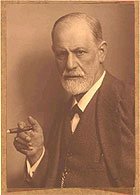










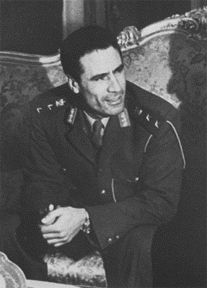


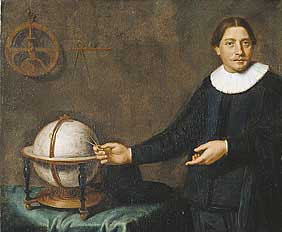




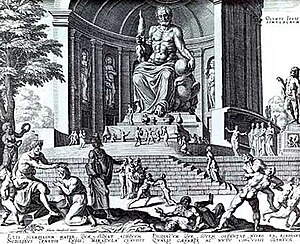










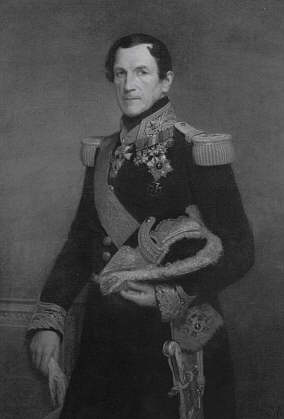















































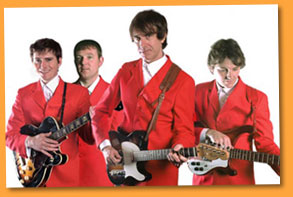





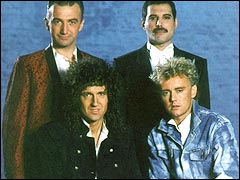
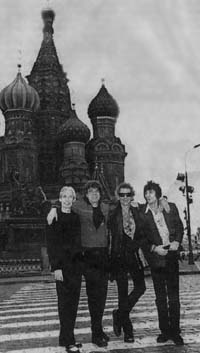









































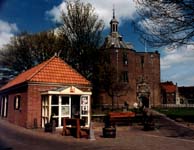

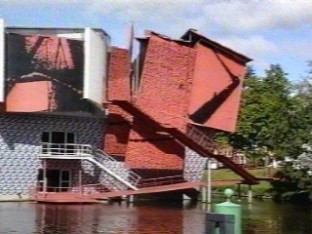


 Het Joods Museum (of Jüdisches Museum) in Berlijn werd in september 2001 geopend. De architect van het gebouw, Daniel Libeskind, heeft het gebouw eruit laten zien als een gebroken Davidsster. De bedoeling van het Joods Museum is de bezoekers laten nadenken over antisemitisme en de jodenvervolging.
Het Joods Museum (of Jüdisches Museum) in Berlijn werd in september 2001 geopend. De architect van het gebouw, Daniel Libeskind, heeft het gebouw eruit laten zien als een gebroken Davidsster. De bedoeling van het Joods Museum is de bezoekers laten nadenken over antisemitisme en de jodenvervolging.



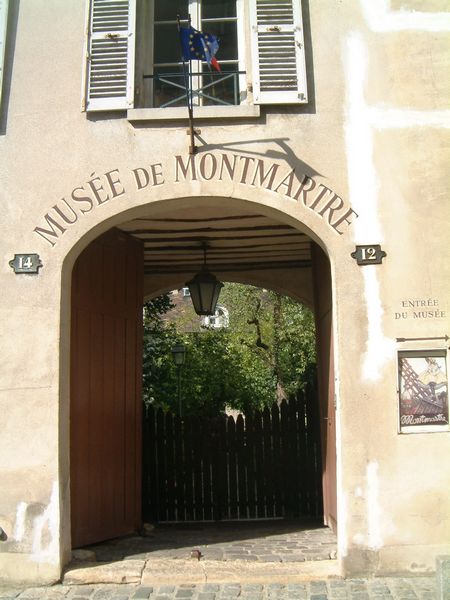


















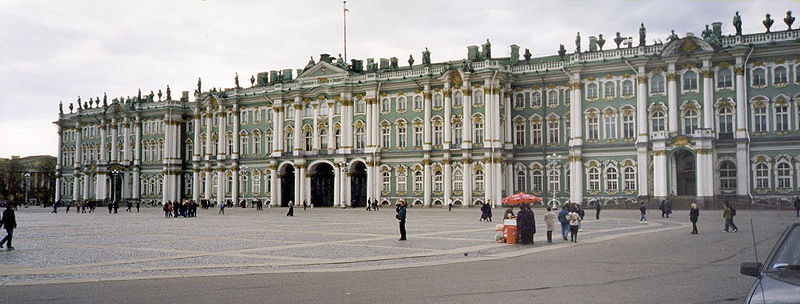
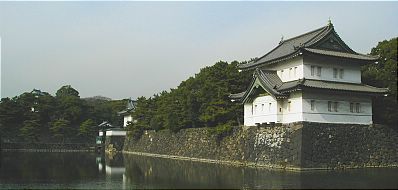
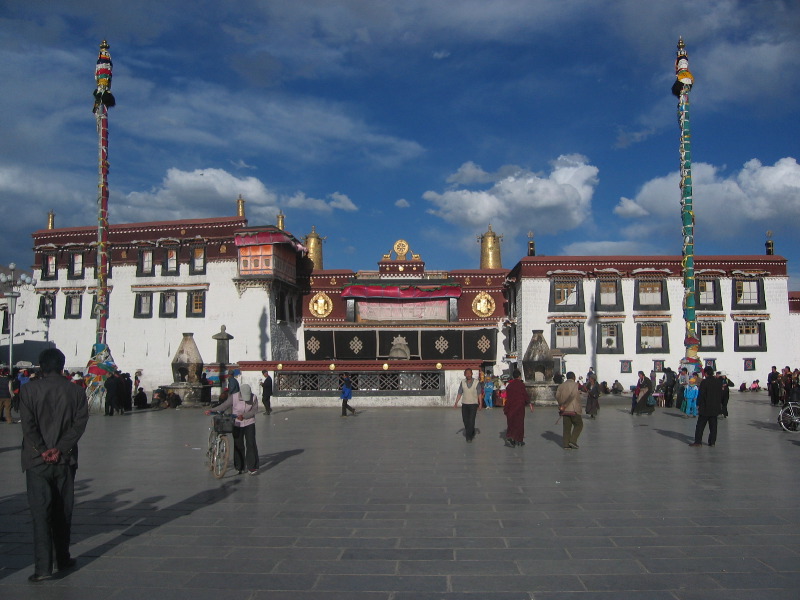

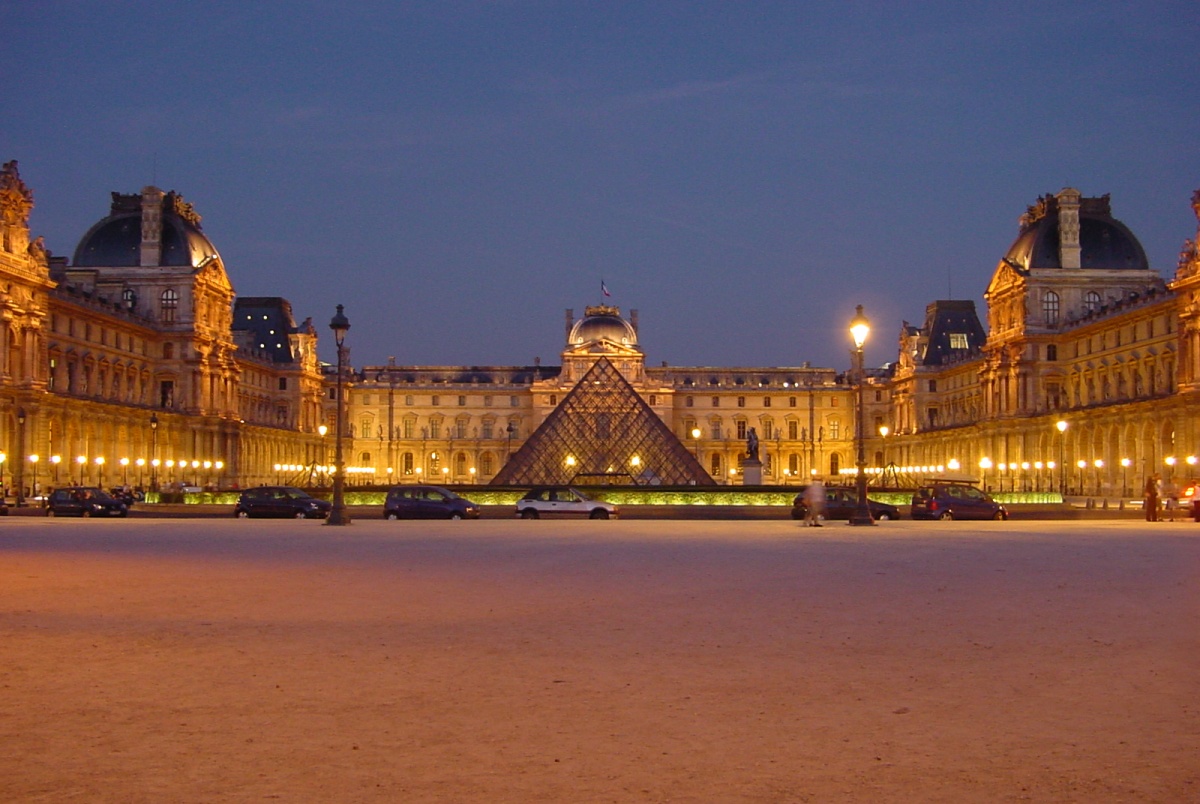
%2015_8_04.JPG)











